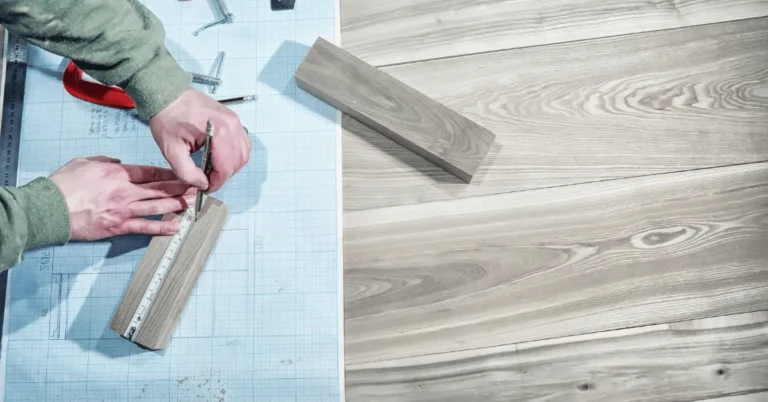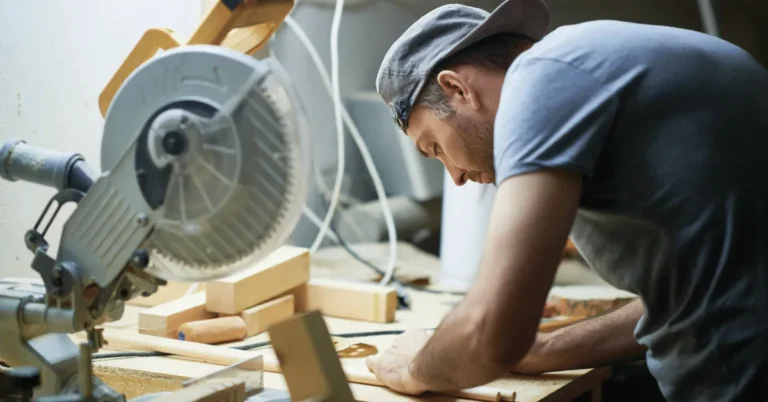For thousands of years, humanity has been using woodworking tools specifically woodworking hand tools to make furniture, homes, villages, and other things with wood.
They have been using the tools that are helping them till now. But in this era, many people think that only the new and electric-powered tools will help to shape the wood for specific purposes which is not fully correct. If you want to do the final touches then you will have to use the hand tools.
So, in this article, I am going to tell you about different hand tools used in woodworking and their uses. I will not only tell you the uses but also tell you the pros and cons of them. So, without talking so much let’s dive right into this article and learn about these tools.
In this list, I am going to tell you about 45 woodworking hand tools their uses, and pros and cons.
#1. Chisels
Chisels stand out as the paramount tools for aspiring woodworkers striving for professionalism. Essential and versatile, these tools are not to be underestimated in the woodworking craft, contrary to the misconception that they are seldom used.
They are used in various ways in woodworking. But first, let me tell you about some of the types of chisels.
Just like anything chisels also have different types and all of them have a specific purpose. The first type is bench chisels.
This is the type of chisel that can be used in various tasks. This type of chisel is just a straight blade and a wooden handle.
The next type is paring chisels. If you want to do more delicate work then paring chisels are your best tools. These chisels are thinner than bench chisels and are used in some special tasks.
Another chisel type is mortise chisels. If you don’t know, then, let me tell you that the mortises are the holes that are used to house tenons, these chisels are used to cut mortises and they have a wide blade and they have weight in the handle.
Next, we have cold chisels. Now, in some cases, woodworkers might need to cut the metal or a stone for the sake of design or any other purposes and in this type of task, they use cold chisels.
These chisels have a steel blade and they have a heavy handle that helps the woodworker to cut the metal.

Uses of chisels
As I have told you chisels are the best tools for finishing and doing so many things. Let me tell you some of the uses of them.
First use if they help to clean up the wood, they help to remove the extra wood from a big wood piece and help to shape it as well.
Sometimes the woodworkers need to join two big pieces of wood together at 90 degrees which can be done by using the chisels.
To do that woodworker uses the chisels and cuts the dovetail slots and tails. If you don’t know about the dovetail then let me tell you that it is a type of joint.
When woodworkers need to mortise hinges they use the chisels to cut the mortise for the hinge. It makes their job easier and more efficient. It is also seen that chisels are the only tools that help to do that most of the time.
There are so many other uses of chisels but I need to cover other tools as well. So, let’s move towards the pros and cons of chisels, shall we?
Pros
- A chisel is a tool that can be used for a variety of tasks and is easy to use.
- Chisels can be found anywhere and are very affordable.
- Chisels will last longer than other tools and it is sometimes seen that they can live a lifetime of a woodworker.
Cons
- If you don’t use them properly then chisels can be very dangerous as well.
- If you don’t sharpen them regularly or from time to time then they won’t be durable.
- If you want to do something that is precision work then it will be difficult to use them.
#2. Mallet
If you have seen the bigger hammers that oftentimes woodworkers use they cut the big log of wood and they are made of metal. But, the mallets are not made of metal but they are made of wood.
Yes, they typically have wood, rubber, or leather. If you are doing work on a project where you don’t want to damage it then this hammer can be used there.
Uses of mallets
Sometimes when you have made some pieces of wood and you need to assemble them then at this time mallets are used to knock wooden pieces together.
Yes, mallets are used in driving chisels. If you use chisels with your hands it would cost you a lot of energy and pain as well. But with the mallet, you can use the chisels easily without hitting your hand on the chisel.
You might have seen the wood furniture with beautiful shapes and bend designs. Well, that design is done with the mallets.
How do they do it? Don’t ask me that but, yep they do it with the mallets. Mallets help the woodworkers to shape the wood by striking it.

Many woodworking shops, including furniture shops, cabinet shops, and woodturning shops use mallets. They are also used by common people like home woodworkers and DIY enthusiasts.
Now, let’s learn what are the pros and cons of mallets.
Pros
- Mallets are very gentle on wood instead of metal hammers. Mallets will not make dents on the wood or even a scratch.
- For woodworking projects, mallets are the safest choice because if you use them on the chisels it won’t even damage the edge of it.
- You can use mallets wherever you want.
Cons
- Of course, they are not as powerful as other metal hammers. They are also not able to help you drive nails or staples.
- It is seen that they are not easy to store because of their large head.
Read More: Does Particle Board Break Easily? A Comprehensive Guide & 11 Tips
#3. Wood Plane
This tool is kind of related to chisels but it has a whole new perspective. This tool is used to shape the wood and to do that you just need to rub it on a wood piece and the upper layer of the wood that you don’t like will be removed.
If you want to make smooth surfaces and want to create precise edges then wood plane is your best option. There are some types of it as well. Let’s know what they are.
Well, there are many different types of this tool and all of them have a different use. So, first of all we have the smoothing planes. As the name of it is suggesting these planes help you to smooth the surface of the wood.
Next, we have the jack planes. If you want to remove a lot of layers from a wood piece then this plane will help you to do that.
Another plane is the jointer plane. In most cases, woodworkers need to make straight edges on boards, so, in this case, this type of plane is used.
In some situations when there is a very complicated job. I mean, if you want to make a design where the structure of the design is very complicated and you need to trim every inch of the wood then in this case the block planes help a lot.
They are small but they will do fine detail work for you.

Uses of wood planes
Utilize planes to achieve impeccably smooth surfaces. Whether you’re flattening boards or crafting furniture and other woodworking projects, planes excel at refining the wood, ensuring precise flatness and straight edges for your pieces.
You can trim the edges as much as you want when you have the wood planes. And you can even smooth the smallest areas on your wood boards.
Now, let’s know the pros and cons of these wood planes.
Pros
- You can use wood planes wherever you want, which means they are very versatile.
- If you want to do some very fine woodworking projects then wood planes won’t let you down and provide you full accuracy.
- You have full control of the wood planes because they are in your hands and you know how it should do its job.
- If you take proper care of these tools then they will last for many years.
Cons
- Without the skill, you won’t be able to use it.
- They consume a lot of time when using them on the bigger projects.
- If you want to use them in the future then you will have to take care of them daily.
- Wood planes can sometimes be expensive if you want them of high quality.
#4. Marking Gauge
If you want to make parallel lines on a piece of wood then a marking gauge is a tool that can help you to do that. Marking gauges have a beam with a blade and a fence.
It is also possible to change the distance between the blade and the fence to set the width of the line.
Well, this tool has two types one is called a cutting gauge and the other is a scoring gauge. The cutting gauge will cut a shallow groove in the wood.
And the scoring gauge will score the surface of the wood and won’t cut it. It is most of the time used to add the marking line on a wood piece.
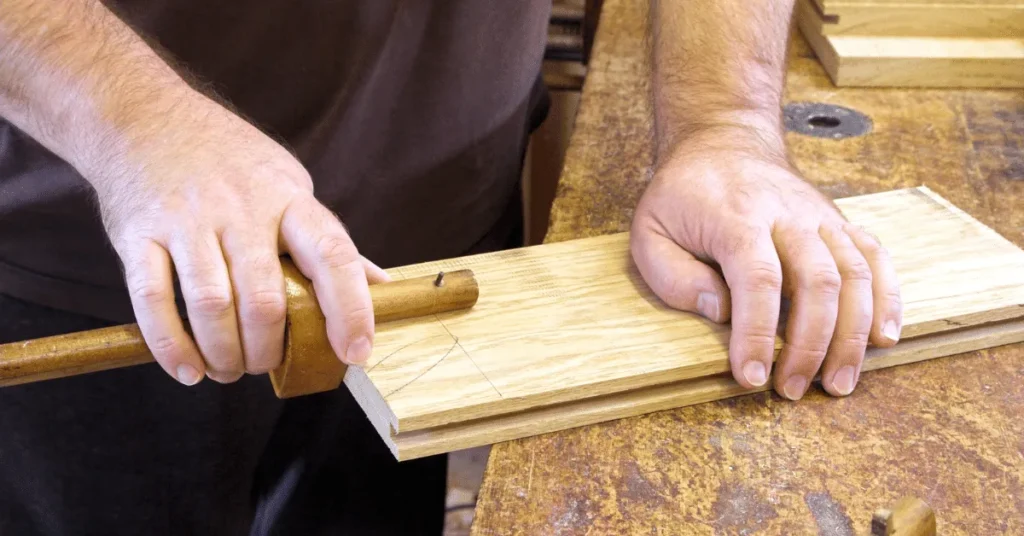
Uses of marking gauges
With the marking gauges, you can lay out the joinery, such as mortises and tenons. You can let yourself know the thickness of the boards and also you can mark them. With a marking gauge, you can make parallel lines as well.
Parallel gauges are used in woodworking shops, furniture-making shops, and cabinet-making shops. Now, let’s know what are their pros and cons.
Pros
- No matter, if you have long pieces of wood marking gauges will make a straight line on it.
- It is very versatile and can be used wherever you want.
- Marking gauges can last for many years because they are made from hardwood and metal.
Cons
- They can sometimes be hard to use if you are a beginner.
- They can also be time-consuming when you are doing work on a complex joinery.
- They can also be expensive if you want those with high quality.
#5. Coping Saw
A coping saw is a small handsaw and it has a very good blade with fine-tooth. It has a U-shaped frame. It is also used in very complex jobs and it is mostly used in those places where other saws can’t be used.
If you want to do trim work, moldings, and other complex and intricate works then a coping saw can help you a lot.
Uses of coping saw
If you want to make intricate cuts and curves then using the coping saw will help you to make them easily. When you can’t use your other tools like jigsaws or fretsaws then this little saw will help you to make your project stunning.
If there is a project in which you need to make the dovetails then it will be very easy if you use the coping saw. A coping saw is used in cutting the moldings and trims.

Often woodworkers need to cut the plywood and veneers and to do that they use the coping saw which helps them to cut this kind of thin wood.
Coping saws are normally used in woodworking shops, carpentry workshops, and DIY projects. Sometimes it is also seen that the model makers, hobbyists, and artists also use them.
Now, let’s know the pros and cons of coping saw.
Pros
- If you need a cut that you want to be with great accuracy then coping saw is the only option you have.
- You can use a coping saw wherever you want means cutting curves, dovetails, moldings, and trimming.
- When you have it in your hands it means that you have full control of it.
- Coping saw is very affordable and you can buy it easily.
Cons
- You cannot cut in depth. If you want to cut the thick material then a coping saw is not useful for that.
- If you are a beginner and don’t use the coping saw carefully then its blade can break easily.
- It won’t give you the speed to cut the wood, especially in hardwoods.
#6. Crosscut Saw
I am 93% sure that you have seen the crosscut before. It is a saw that is designed to cut the wood across the grain. There are teeth on this saw that are angled to cut every fiber of the wood which makes it cut the wood smoothly.
These saws are used for projects like furniture making, cabinet making, and cutting firewood as well.
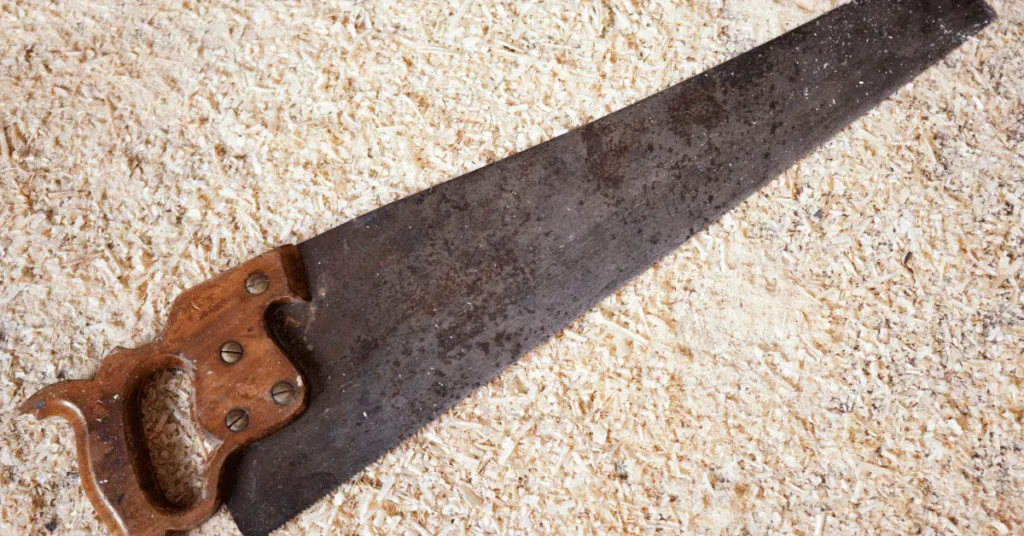
Uses of crosscut saw
This type of saw is used to cut wood no matter if it is bigger or shorter. It can cut across the grain of wood. It is used in cabinet making, furniture making and just cutting firewood and other bigger wood logs.
They are mostly used in woodworking shops which is obvious, home workshops, construction sites, lumberyards, and firewood yards.
Now, let’s know what are the pros and cons of crosscut saw.
Pros
- It will make a clean cut to a bigger wood log.
- It can be used for different purposes and tasks.
- It is not expensive and is affordable.
- It is very easy to use, there is no tough or complex thing in it. There is no need for special skills for it.
Cons
- It is not as fast as a ripsaw(which I am going to introduce to you).
- It can be sometimes difficult to make straight cuts.
- If you want to cut the softwoods then it is not suitable for that.
Read More: How Do You Cut Particle Board Without Chipping It?
#7. Rip Saw
A ripsaw is a regular saw that you might have seen in woodworking. It is designed to make a rip cut. This saw is designed to make the cuts parallel to the grain of the wood.
It has teeth that are 90-degree angles to the blade. It can cut the wood without chipping or tearing it apart.
There are different types of this saw as well. Like the hand rip saw. It is a saw which can be used by hand and can make little and delicate cuts on the wood.
Other types of it are power rip saws, circular rip saws, and table saws. These are bigger saws and are used for bigger cuts.
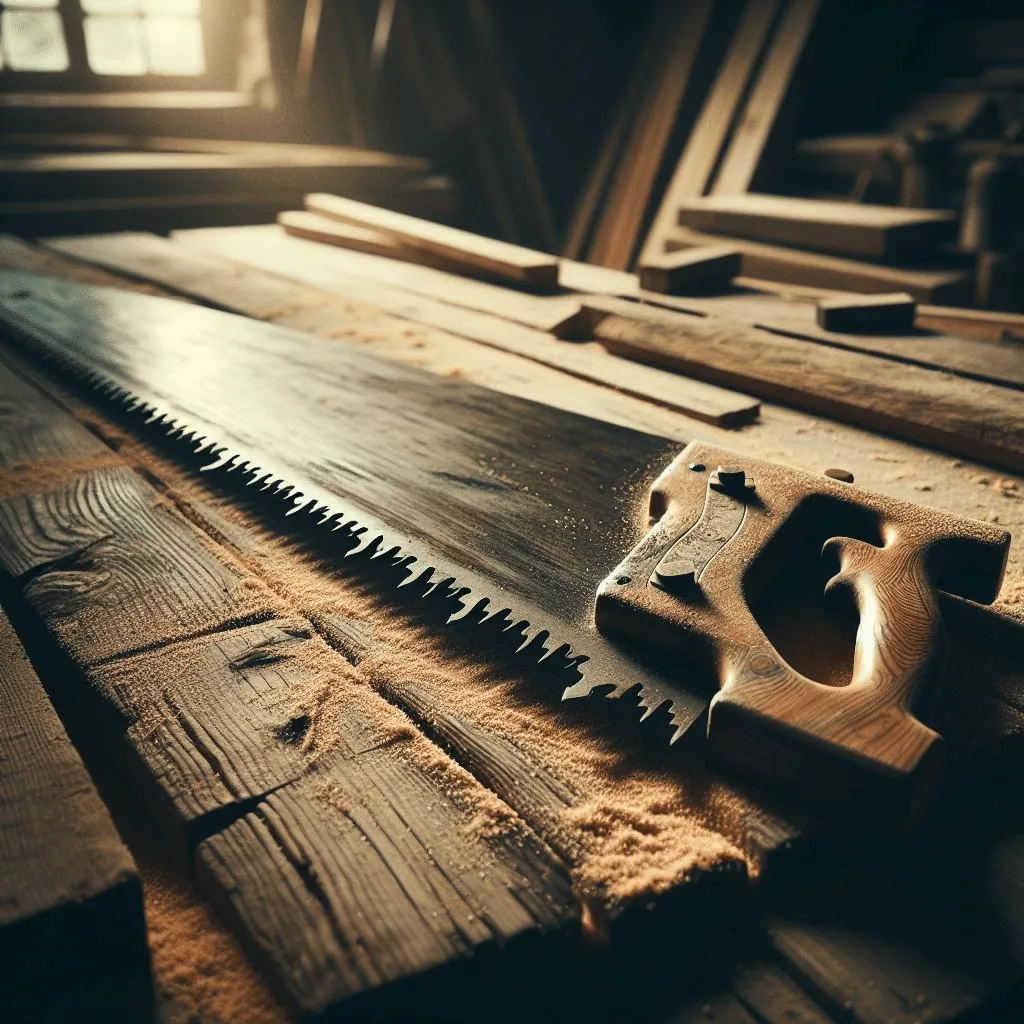
Uses of the rip saw
For precision in ripping lumber to your desired width, a rip saw is the perfect tool at your disposal. Easily transforming longer boards into shorter pieces, this tool proves invaluable.
When it comes to trimming edges or crafting dadoes and rabbets, the versatile rip saw emerges as an essential companion, ensuring accuracy and efficiency in your woodworking endeavors.
It is used in woodworking shops, construction sites, and DIY projects. Now, let’s know what are good and bad things in this tool.
Pros
- You can cut the grain efficiently with a rip saw.
- You can make clean and chipping-free cuts with a rip saw.
- Ripsaw is durable and long-lasting.
Cons
- It can be difficult to control and need a little bit of skill to use it.
- If you want to do cross-cutting then it is not effective for that.
#8. Backsaw
A backsaw is a very important saw for doing jobs where you need a lot of straightness. There is a stiffening rib or you can say back at the opposite of the cutting edge.
It allows the blade to keep itself straight. This saw is used in different specific cuts like dovetails, tenons, and miters.
Uses of backsaw in woodworking
If you want to cut tenons then backsaw will help you to do that easily. Then tenons are things like rectangular projections on the end of the wood and they go into the hole on the other piece of the wood. To make this projection the wood backsaw is used.
You can use a backsaw to cut dovetails. If you want to make cuts in wood that will help to connect two pieces of wood at 90-degree then backsaws can help you. Backsaws are used in making this dovetail joint.
If you want to create joints in moldings and trim then you need to make miters that are angled cut. These cuts can be achieved by using the backsaw.
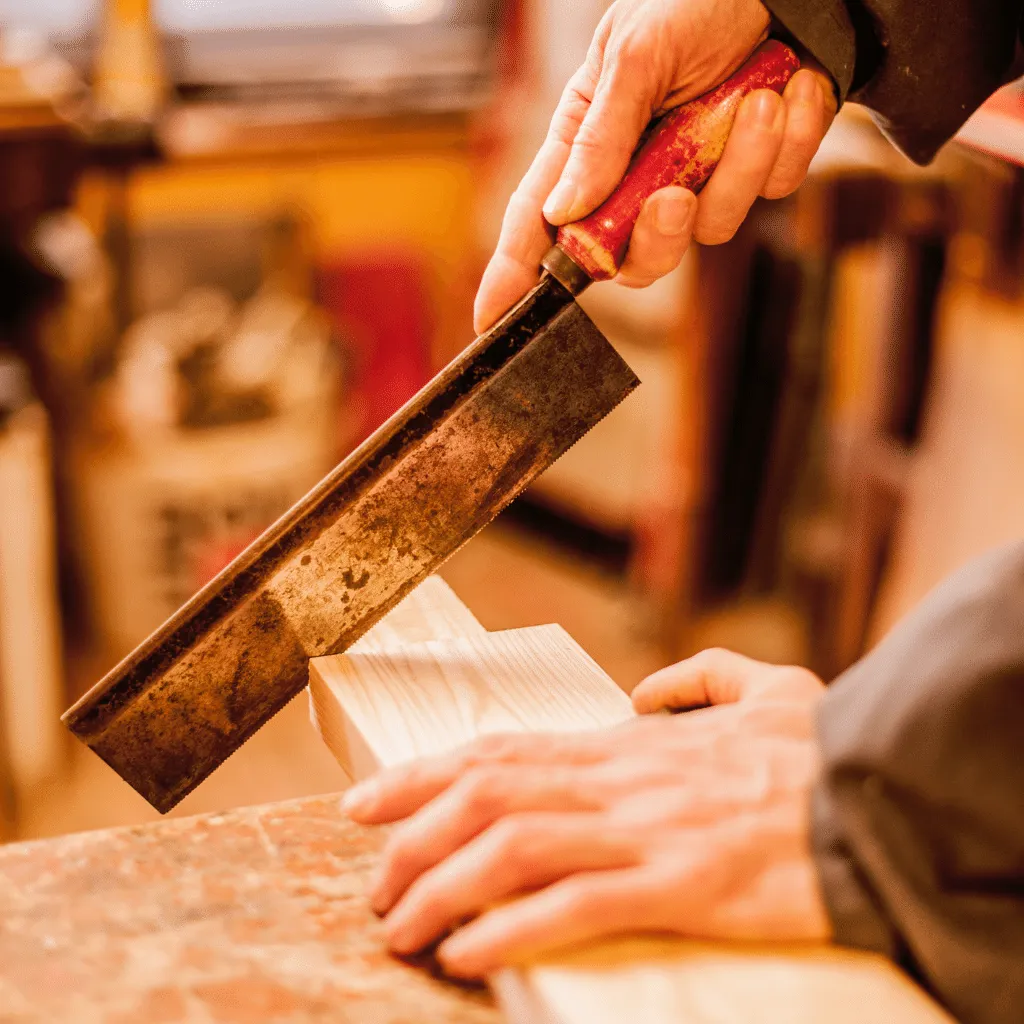
If you want to cut the delicate and wood-like veneer then you can use the backsaw as well. You can cut veneer with a backsaw in any shape you want.
Backsaws are used in woodworking shops by professionals. But it is also possible to use them by hobbyists.
Now, let’s know the pros and cons of backsaws.
Pros
- With a backsaw, you can make precise cuts without any special techniques.
- It is very easy to control this tool because the thing that is on the back of the blade will help to keep the saw in position.
- It can be used on different wood and can be used in a variety of tasks.
Cons
- It is more expensive than other handsaws.
- You do need some skills to use it properly and for that, you will have to do the practice.
- You will need to sharpen this tool regularly otherwise it won’t work.
#9. Dovetail Saw
You might know about dovetails because I have told you above about it. Well, this saw is specifically used for cutting dovetail cuts.
On the other hand, if you don’t know then let me tell you that a dovetail is a type of joint that is used to combine two wood pieces at 90 degrees.
The dovetail saw is around one foot or half a foot long and has around 0.020-0.025 inches thick blade. This saw has around 14-22 teeth.
This type of saw is not only used in making dovetail joints but also in cutting fine moldings and trim, tenon, mortise joints, cutting miter joints, and cutting dadoes and rabbets.
They can be used in cabinet making, furniture making, musical instrument making, and box making.

Now, let’s learn about the pros and cons of this tool.
Pros
- It will make very fine cuts and they will be accurate as well.
- You can use a dovetail saw for a variety of purposes.
- The dovetail saw is not very expensive.
Cons
- If you are a beginner then you should not try it.
- You need a lot of practice to master it.
- It is not as fast as other power tools.
#10. Carpenter’s Square
If you want to lay out the specific square lines and angles then you should use a carpenter’s square. It is made of steel and sometimes aluminum and it has two arms that are perpendicular to each other.
Now, it might not have more explanation of what it is but it does have a lot of uses. So, let’s know where is it used.
Uses of carpenter’s square
If you want to make the joints of your project, that are accurate at 90 degrees then in this type of job you will need the carpenter’s square.
The carpenter’s square can be used in laying out square lines which are essential for framing joist or a cabinet carcass. If you want to layout 45 degree angles then this tool can also be helpful.
If you want to do framing of walls, floors, and roofs then this tool can be useful. Achieve a level finish for your walls, floor, and roof effortlessly with the help of this tool.
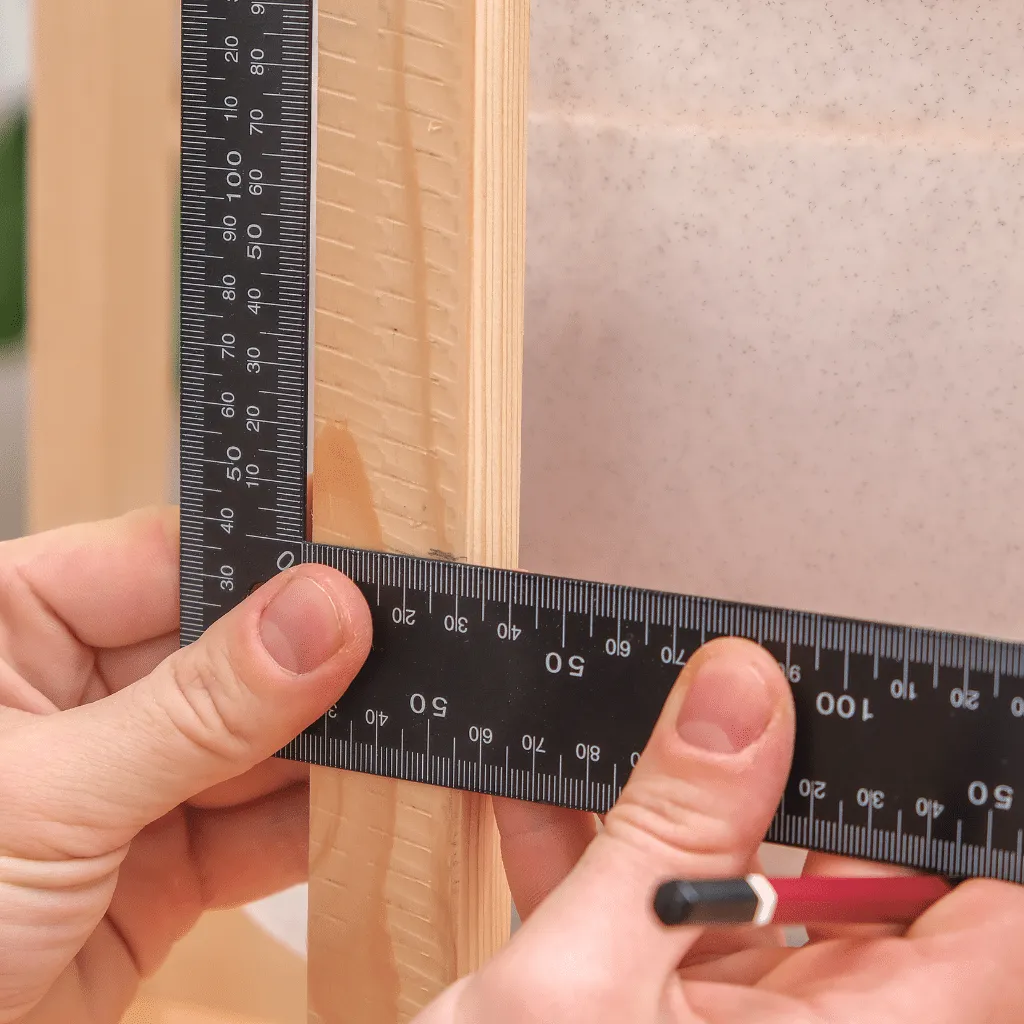
This versatile tool is ideal for carpentry finishing touches, enabling you to expertly trim and refine decorative details with precision. It can be used in cabinetmaking. Now, as there are so many uses of it, let’s know what are its pros and cons.
Pros
- Whenever you will use this tool it will give you accuracy and it is a fact.
- It can be used wherever you want and can be used for years.
Cons
- The thing is its size can be bulky and will be hard to carry around.
- They are not suitable for all of the tasks because they have a limited range.
- They can be expensive if you want to buy high-quality.
#11. Try Square
The purpose of this tool is also the same, it is used to check the 90-degree angles on pieces of wood. It has two parts one is a blade and the other is stock and they both make an L shape.
The try square tool is made of steel and wood. I mean, its blade is made of steel, and its handle with hardwood. It also has different sizes but its highest size is 24 inches.
When you will be working with the cuts or checking the angles then you can select the size of it accordingly.
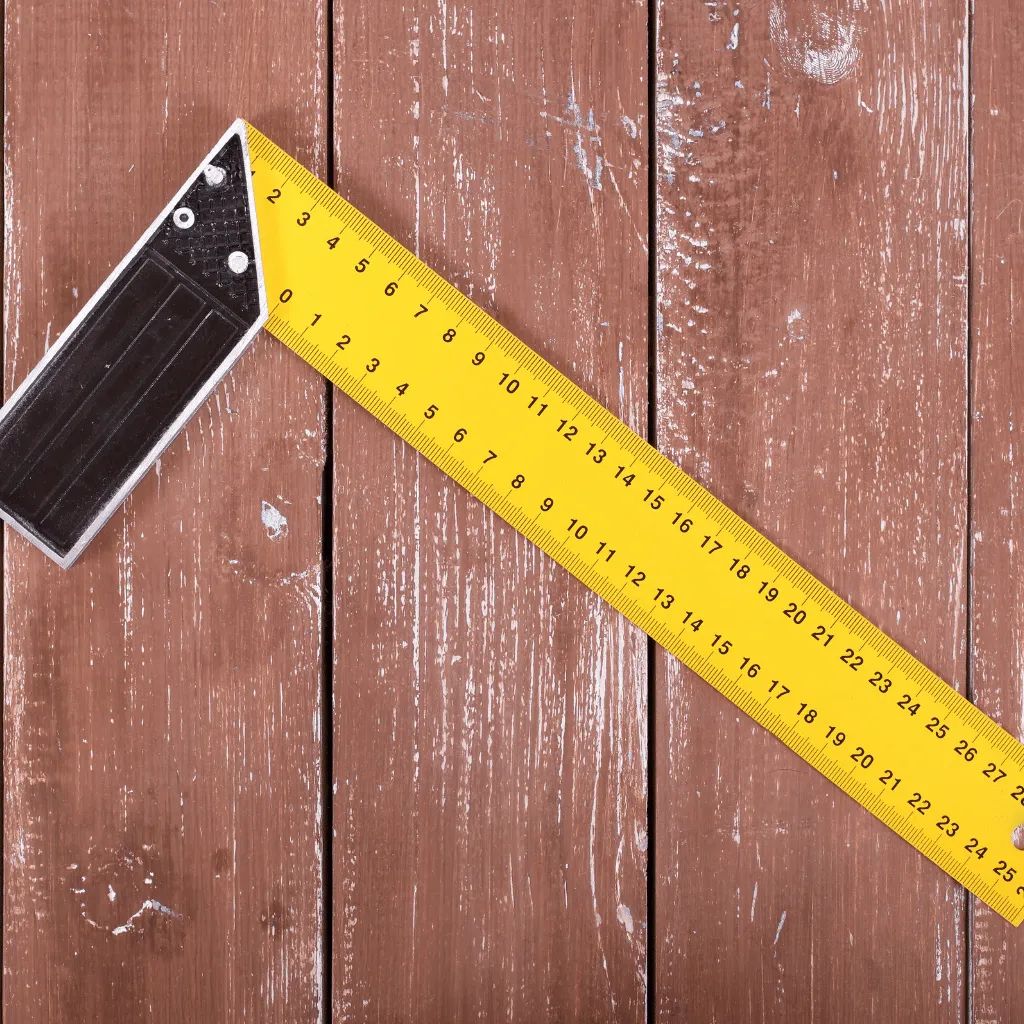
Uses of try square
As you know, it is a measuring or angle-checking tool so it can be used for various purposes. It can be used for marking lines that should be parallel to an angle.
If you want to check the squareness then you can use this tool. You can also lay out the cuts with it and you can also set up fences on saws and can check the accuracy of other tools as well.
Now let’s know what are the pros and cons of try square.
Pros
- Try square will always give you accuracy no matter how you use it because it is in its nature.
- If you want to use it for different kinds of jobs then it allows you to do that, which means it is very versatile.
- It is not used with so much power that it can break which means that it is very durable and will last for years.
- It is also affordable, you don’t need to spend a lot of money on it.
Cons
- If you are doing work on a bigger wood log then it won’t help because of its size.
- If you are a beginner then you need to do some practice to get good results.
Read More: Is Particle Board Safe to Cut? (Safety Precautions)
#12. Combination Square
It is another square tool that is used in woodworking and is also very versatile. The ultimate, answer is, that it is a combination of different square tools into one. It is mostly used for checking squareness, measuring, and marking.
Uses of a combination square
As I said it is used in measuring. So, yes, it is used in measuring lengths, depths, and heights. You can even do the measuring in the millimeters.
You can do marking with it, you can mark the lines for cutting the line from a specific area and you can do many other tasks with it as well.
If you need to check the squareness of lumber, workpieces, or any other wood pieces then you can use the combination square. If we talk about who uses it then it is used in framing, cabinetmaking, trim carpentry, and furniture making.
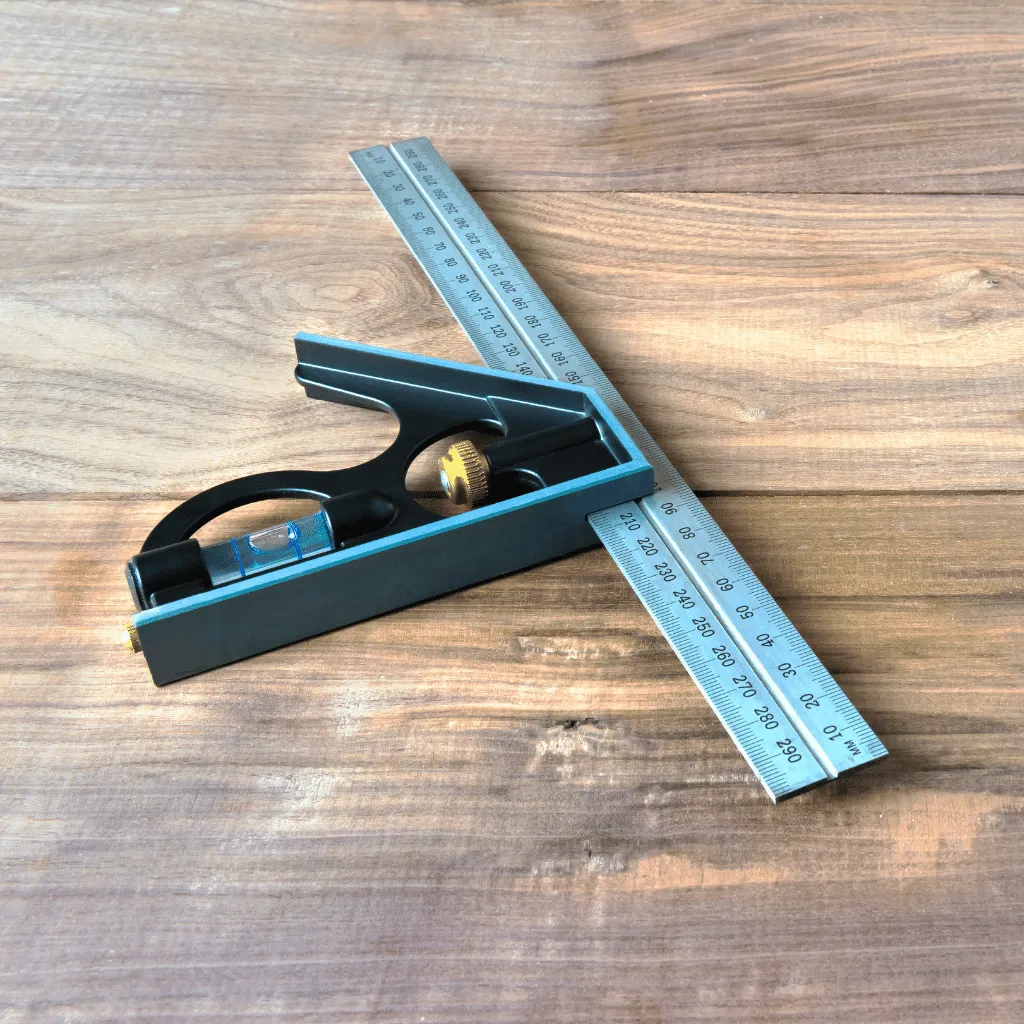
Now, let’s talk about the pros and cons of this tool.
Pros
- It can you used wherever you want.
- It will always give you accurate results because that’s what is made for.
- It will last longer than you.
Cons
- It is not affordable if you buy it from a high-quality brand.
- It can be difficult to use for beginners.
#13. Sliding Bevel Gauge
This is again a tool that is used for angle checking and it has two more names and they are bevel gauge and false square. It is used in transferring angles and setting them as well.
If you want to transfer any angle of any degree then you can use this tool to do that. Now, if we learn about its uses then we can understand it more.
Uses of sliding bevel gauge
If you want to transfer angles from one wood piece to another then this tool will be used in this case. It is also used in other tasks like cutting dovetails, cutting crow molding, and installing cabinet doors.
If in some projects you need to cut something and you need to set the angle of the saw or on the other hand you need to cut the bevels on edges or you want to make compound cuts then in all of the tasks this tool can help you.
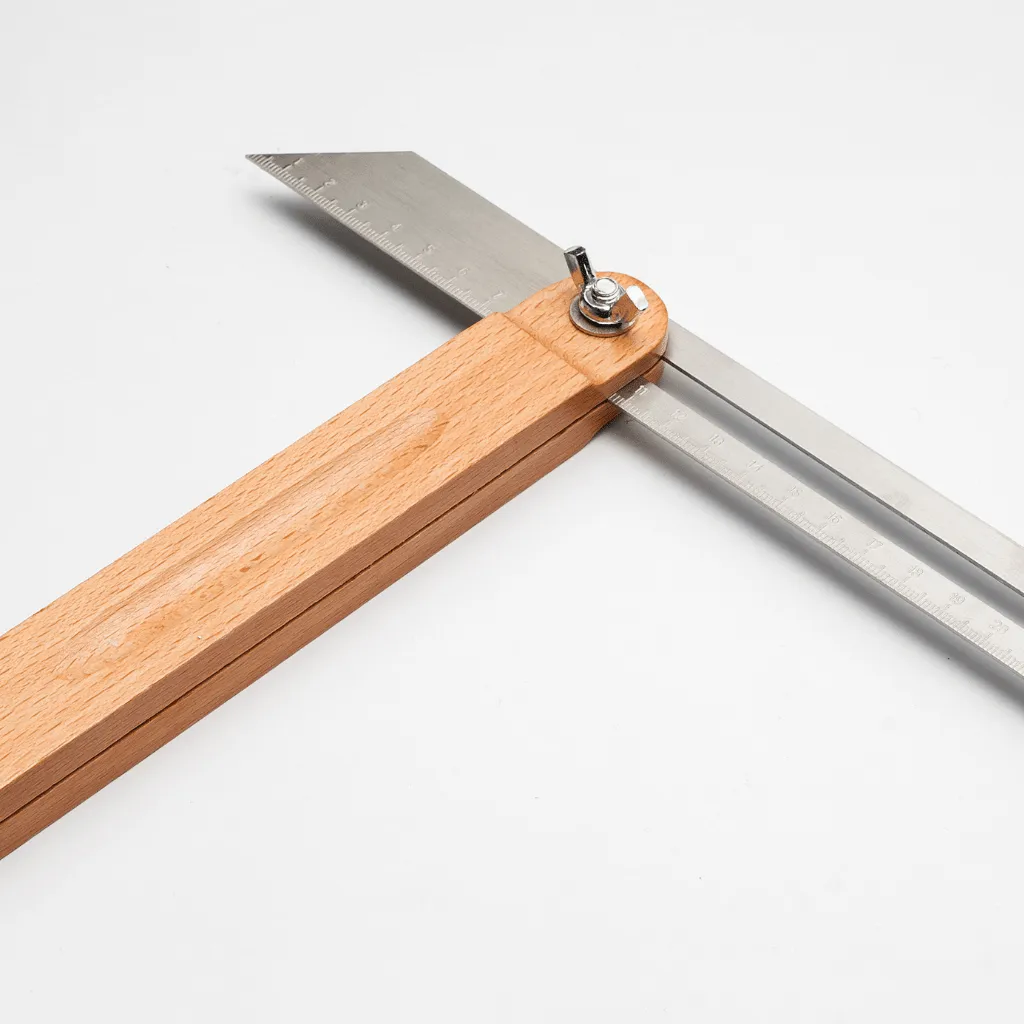
If you simply want to measure the angles then you can also use this tool there. This type of situation happens when you need to take the measures from an already-made design.
Most of the time this tool is used by cabinetmakers, furniture makers, and carpenters. Now let’s know what are the good and bad in the bevel gauge.
Pros
- First of all, it is very easy to use and you can adjust it in a matter of seconds.
- Next, it will always provide you with the accuracy that you want in your projects.
- The third thing is a versatile tool and can be used for many tasks.
Cons
- It is sometimes not enough for some projects because it has a limited range.
- It can sometimes be inaccurate if you don’t use it accurately.
#14. Framing Square
Framing tool is a tool that is used for measurements, laying out square corners, level checking, out cuts markings, and determining rafter lengths.
This tool is made of two main parts and it is mainly made up of steel. The two parts are a body and a blade. The body is a longer part and the blade is a shorter part or you can say narrower arm.
The blade is perpendicular to the body and this tool also made the L shape but this time the body or the upper side of the L is longer than the lower part.
This tool has many markings on it that are very useful for a woodworker. You can measure in inches and feet with this tool.

Uses of the framing square
This tool proves invaluable not only for checking the levels of floors and walls but also for marking outcuts on materials like lumber using its framing square.
When working with rafters or roofs, it facilitates accurate measurements, ensuring precision in determining the correct lengths.
Now, let’s know what are the pros and cons of framing square.
Pros
- It is a very versatile tool and it can be used for various tasks.
- It is also durable as it is made of steel.
- It is easy to use and anybody can use it.
- It is not expensive and can be bought from anywhere.
Cons
- It is sometimes difficult to use in tasks like marking out cuts on curved surfaces.
- It is not as accurate as other tools like combination tools.
#15. Wood Rasp
If you have seen files, that are used to sharpen blades then let me tell you that this wood rasp is very close to that tool. It is used on the wood and not on the steel. it helps to remove the larger amounts of material quickly from the wood.
If in some cases your wood pieces are not clean and there is something on them like paint then you can use a wood rasp to remove it from your wood. You can also use rasp on both the hardwood and the softwood.
Uses of wood rasps
If you want to do the rough shaping of a wood piece then you can use the wood rasps. It is the tool that you will use before the final touches tools like the file or sandpaper.
If you have a wood piece that has so many dents, scratches, and gouges then you can use a wood rasp tool and it will help to remove them easily.
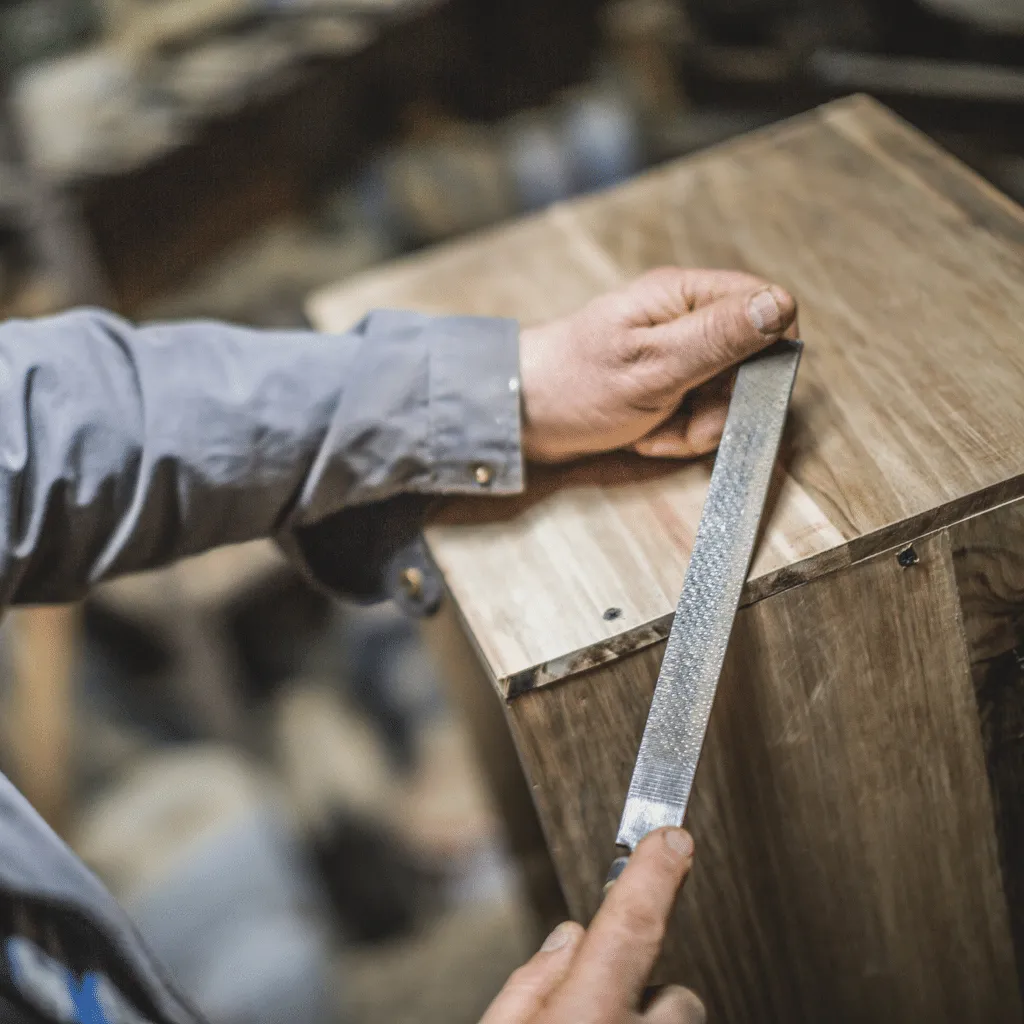
If you want to make a furniture design and in this design, you need to make curves or rounded edges then this tool will help you do that. Just like that if you want to make more shapes of that wood then you can use it there as well.
Now, let’s know what are the pros and cons of it.
Pros
- It has a very good speed because of its teeth and it will remove a large amount of materials quickly.
- It will also make the finish smooth and won’t hurt your design.
- It can be used on any kind of wood and can be used on any design.
Cons
- It is not easily controlled by beginners.
- If you don’t use it with care then it can ruin your design and will leave deep scratches.
- It is not made for final finishing touches.
Read More: How Do You Clamp Cabinets Together? Art of Cabinet Clamping
#16. Drawknife
It is a traditional tool and has been used for many years. It is a hand tool and is used to shape the wood. You can use it for final touches and rough shaping as well.
Let’s know its uses then you will understand it more.
Uses of drawknife
If you have cut a new tree or you have got a tree log that still has the bark on it then this tool will help you to remove the bark from it.
Don’t worry, if you are thinking that it will damage the wood under the bark. The blade of this tool is sharp but it is not so sharp that it will cut the wood.
If you want to do the shaping with the wood then you can use the drawknife. It is most of the used in shaping the chair legs, table legs, and tool handles.
If you don’t have a plane then you can use the drawknife to smooth the surfaces. It is not as precise as the plane but it is faster.
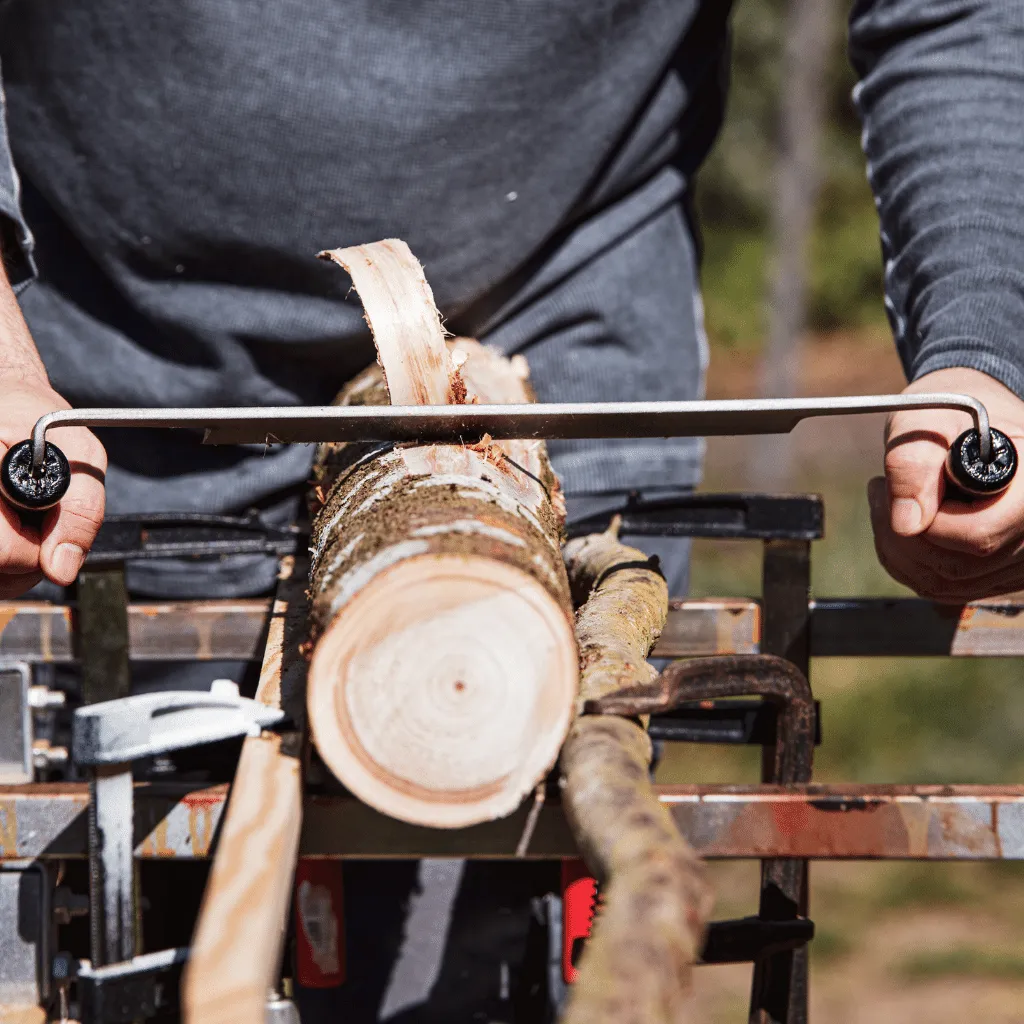
If you are a woodworker who makes wood utensils then this tool will help you to make spoons and bowls easily. This tool is mainly used by woodworker shops, hobbyists, and homeowners.
Let us know if this tool has any pros and cons.
Pros
- It is very efficient for larger pieces of wood.
- It can be used on any wood and wherever you want.
- It is not expensive.
Cons
- It can be dangerous for beginners.
- It also requires practice and should not be used by any inexperienced person.
- If you want to final touches on something then it is not good for that and also it is not good as chisels and planes.
#17. Spokeshave
As the name suggests it is made for shaving the wood means shaping the smooth curved surfaces. It is a very good hand tool and has different uses. This tool has two types flat-soled and round-soled.
If you want to shape the flat surfaces then you will use flat-soled and if you want to shape the round surfaces then you will use the round-soled.
Uses of spokeshaves
It is used in smoothing rough surfaces, shaping curves, removing ridges and bumps, and it also used in rounding corners.
This tool also has a specific purpose and that is it is used in very tight spaces and it will shape irregular shapes.
That’s it there are no other uses of it and that’s why let’s know if there are any pros and cons of it.
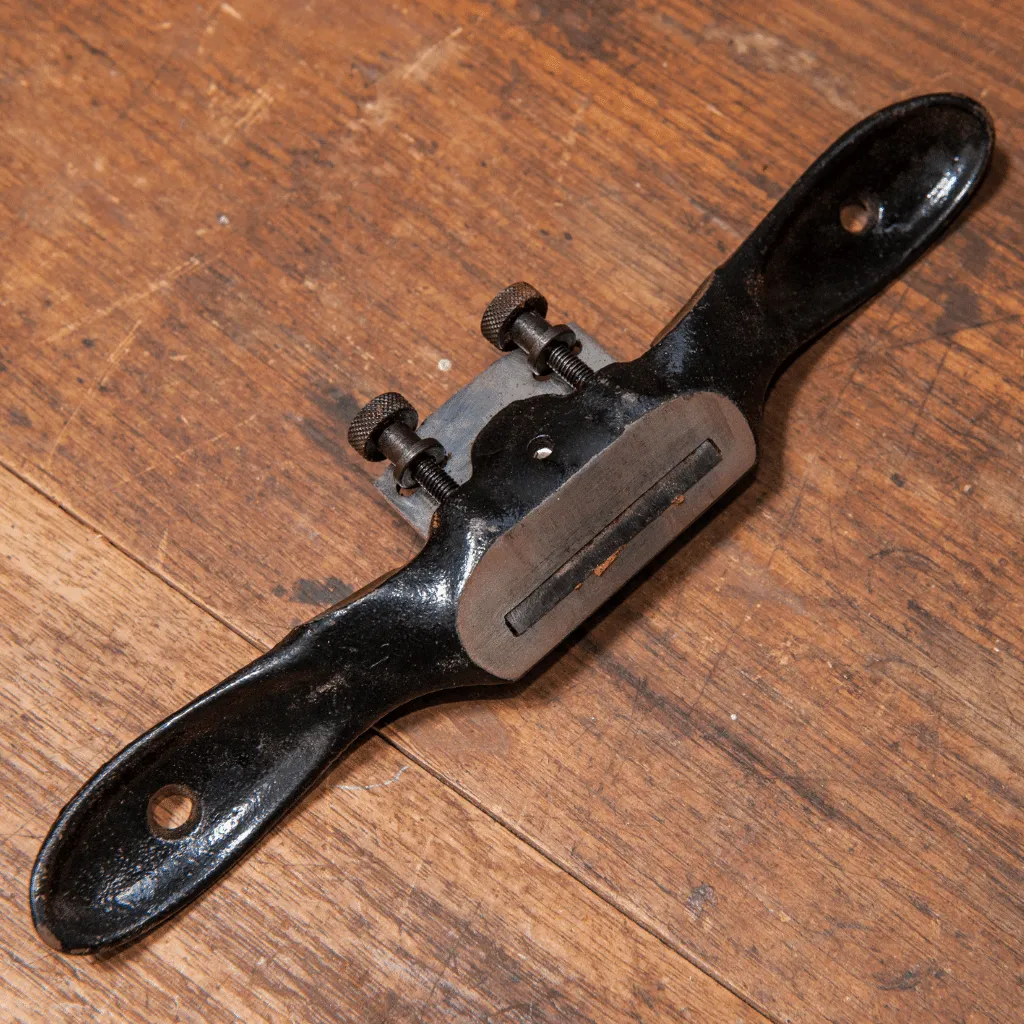
Pros
- If you want to become a professional woodworker then you must have this tool because it is very versatile.
- It will provide accuracy to a high degree.
- You will have an excellent control of this tool.
- It is very portable and can be used wherever you want.
Cons
- If you are a beginner then it will be a little hard for you to learn it.
- It won’t cut deep into the wood.
- It is not suitable for planing if you are thinking.
#18. Block Plane
If you want to smooth the surface of your wood or you want to trim or you want to shape it or you should do end grain planing then block plane is the best tool for you.
It is not a bigger block plane, but, it is a simple small tool with a low-angle blade and it is used to get sometimes the final touches and precise work.
Uses of block plane
Achieve precise end grain planing effortlessly with the block plane; using other tools can prove challenging for this task.
When refining the details of your newly crafted wood piece, the block plane becomes an invaluable ally, providing efficient and effective trimming.
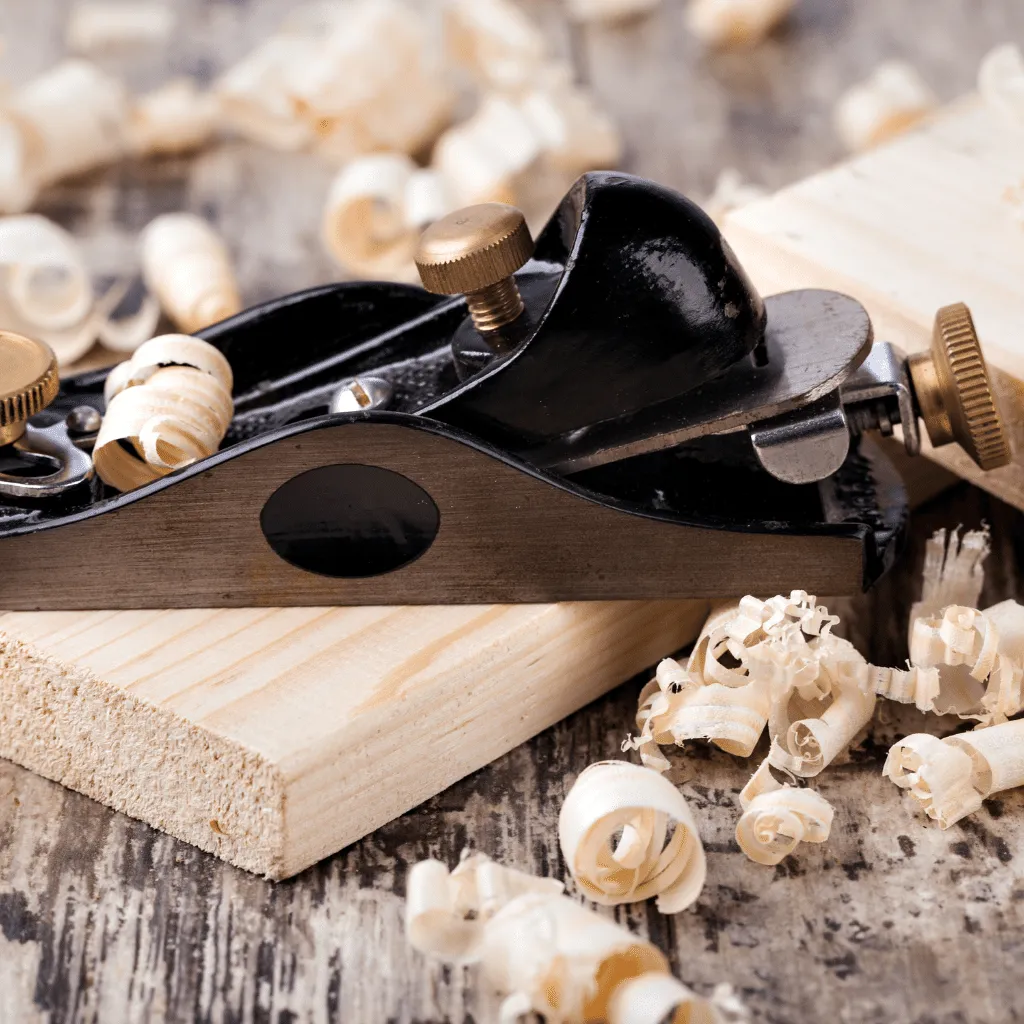
Shape your work effortlessly with the block plane—it’s a versatile tool that comes in handy not only for shaping tasks but also as a reliable option for smoothing surfaces when other tools are unavailable.
Pros
- It is a small and cute tool and is it also lightweight which means it is easy to use.
- It will give the precise work for tasks like end graining.
- It is a very versatile tool and can be transported wherever you want.
Cons
- It doesn’t have depth cutting and is not good like other planes.
- It also requires practice because as it is used in final touches it can ruin your design as well if not used correctly.
#19. Cabinet Scraper
If you want to remove the old finishes or thin layer of wood from your wood then you can use the cabinet scraper. It is a very good and versatile tool and can be used on different surfaces.
Uses of cabinet scrapers
Achieve surface smoothness effortlessly with the scraper tool. This versatile instrument not only perfects your work but also corrects imperfections, allowing you to shape irregularities in your wood designs with precision.
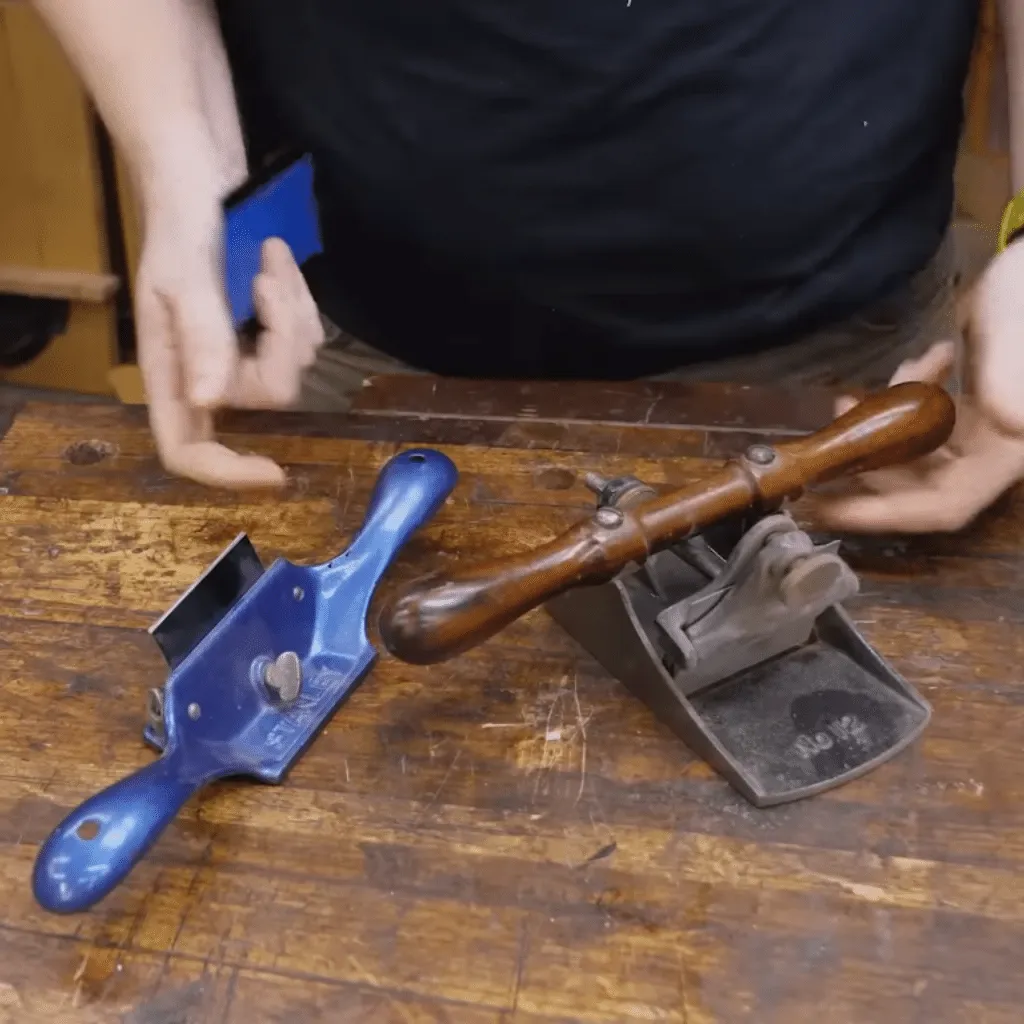
This tool is most of the time used by luthiers, woodcarvers, and other woodworkers who want to smooth and shape their wood.
Pros
- With this tool, you will have precise control over where you are using it.
- If you want a smooth finish in your design then you can use this tool.
- No matter what kind of woodworker you are, you can use this tool for smoother shapes.
- This tool is very durable and can last for years.
Cons
- You do need the skill to use this tool.
- This tool cannot be used for larger areas and is labor-intensive.
- It has a limited depth of cut.
#20. Woodturning Chisels
Woodturning chisels are the secret weapons of the woodworking world. These specialized tools are designed to shape and sculpt wood while it spins on a lathe.
With their sharp blades and sturdy handles, wood-turning chisels allow artisans to create intricate designs and turn ordinary pieces of wood into stunning works of art.
Uses in Woodworking
The uses of woodturning chisels in woodworking are as diverse as the craftsmen who wield them. From creating elegant bowls and vases to crafting intricate spindles and furniture legs, these chisels are essential for any woodturner looking to add depth and character to their projects.
They are also used for removing excess material, smoothing rough surfaces, and adding fine details to the finished piece.
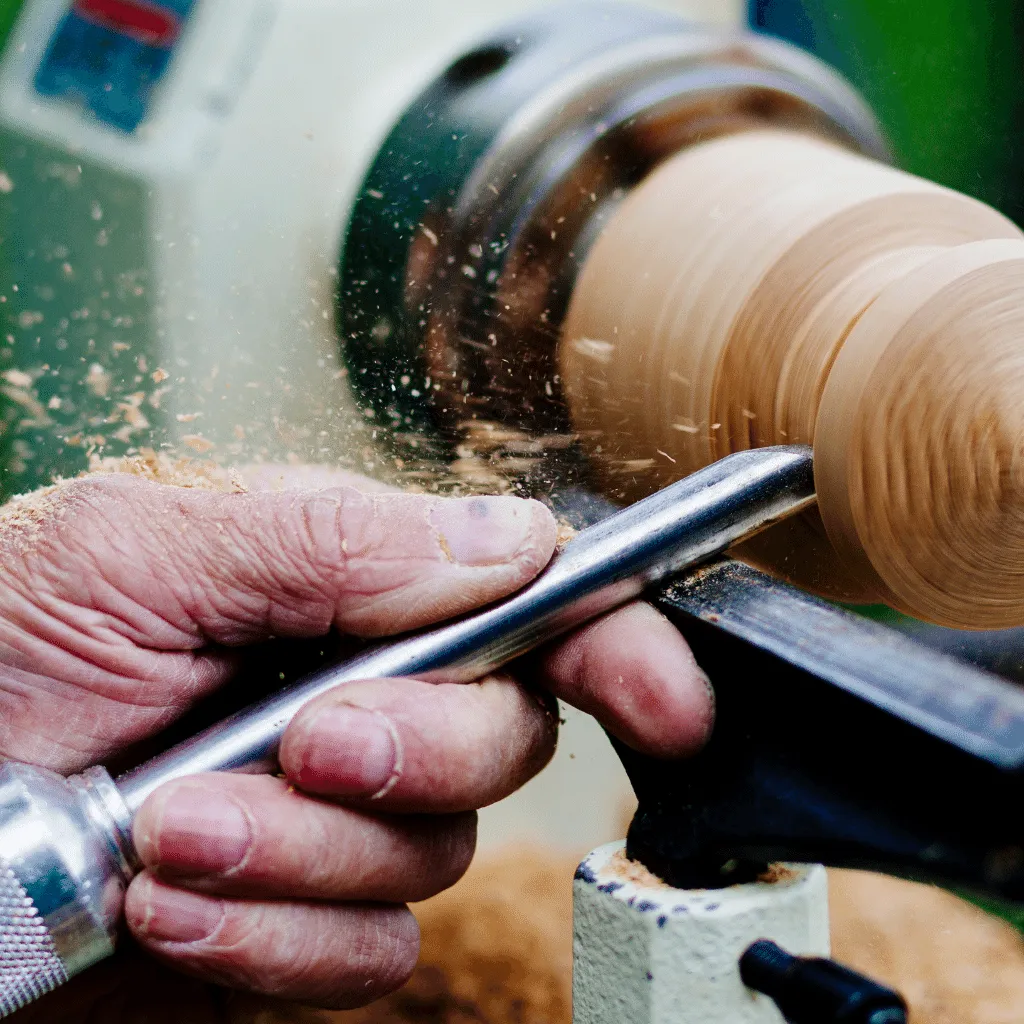
Who Mostly Uses Them?
Woodturning chisels are predominantly used by woodturners, who are skilled artisans specializing in the art of turning wood on a lathe.
These craftsmen range from hobbyists and DIY enthusiasts to professional woodworkers and artists. Whether you’re a beginner or an expert, woodturning chisels offer endless possibilities for unleashing your creativity.
Pros and Cons
Pros
- On the plus side, they allow for precise control and the ability to create intricate designs.
- They also provide a fast and efficient way to shape wood.
Cons
- However, they require skill and practice to master, as their sharp blades can be unforgiving to beginners.
- Additionally, the cost of quality woodturning chisels can be a bit steep, but the investment is well worth it for those serious about their craft.
#21. Brace and Bit
Brace and bit are hand tools used for drilling holes in wood. The brace is a handle with a rotating mechanism, while the bit is a spiral-shaped drill piece that attaches to the brace. Together, they provide a manual drilling experience that allows for precision and control.
Uses in Woodworking
Brace and bit are versatile tools that can be used for various woodworking tasks. They are commonly used for creating holes for dowels, screws, or nails. They are also ideal for drilling holes in hard-to-reach areas where power drills may not be suitable.
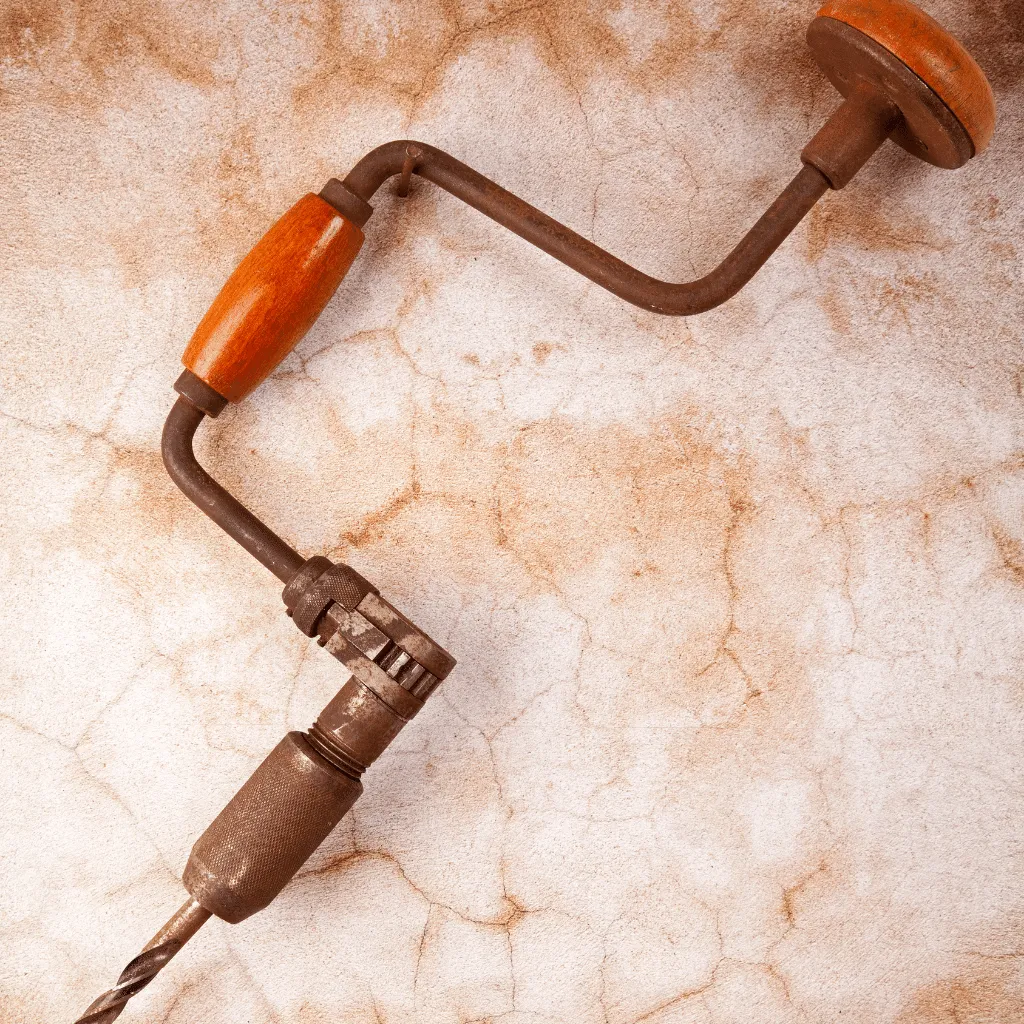
Who Mostly Uses Them?
While power tools have become more prevalent in modern woodworking, brace and bit are still favored by traditional woodworkers, artisans, and enthusiasts.
Their simplicity, reliability, and ability to provide a tactile experience make them popular among those who appreciate the craft of woodworking.
Pros and Cons
Pros
- On the positive side, they offer precise control, are lightweight and portable, and do not require electricity.
- They also allow for a quieter working environment.
Cons
- However, they do require physical effort and can be slower compared to power drills.
- Additionally, they may not be suitable for heavy-duty drilling tasks.
#22. Auger Bit
Auger bits are specialized drill bits designed for woodworking. They feature a spiral-shaped flute that helps in removing wood chips as the bit drills into the material. This design allows for efficient chip removal, reducing the risk of clogging and overheating.
Uses in Woodworking
Auger bits are versatile tools that can be used for a variety of woodworking tasks. They excel in drilling deep, clean holes in both softwoods and hardwoods.
From creating holes for dowels and screws to boring holes for mortises and tenons, auger bits are a go-to choice for precision work.
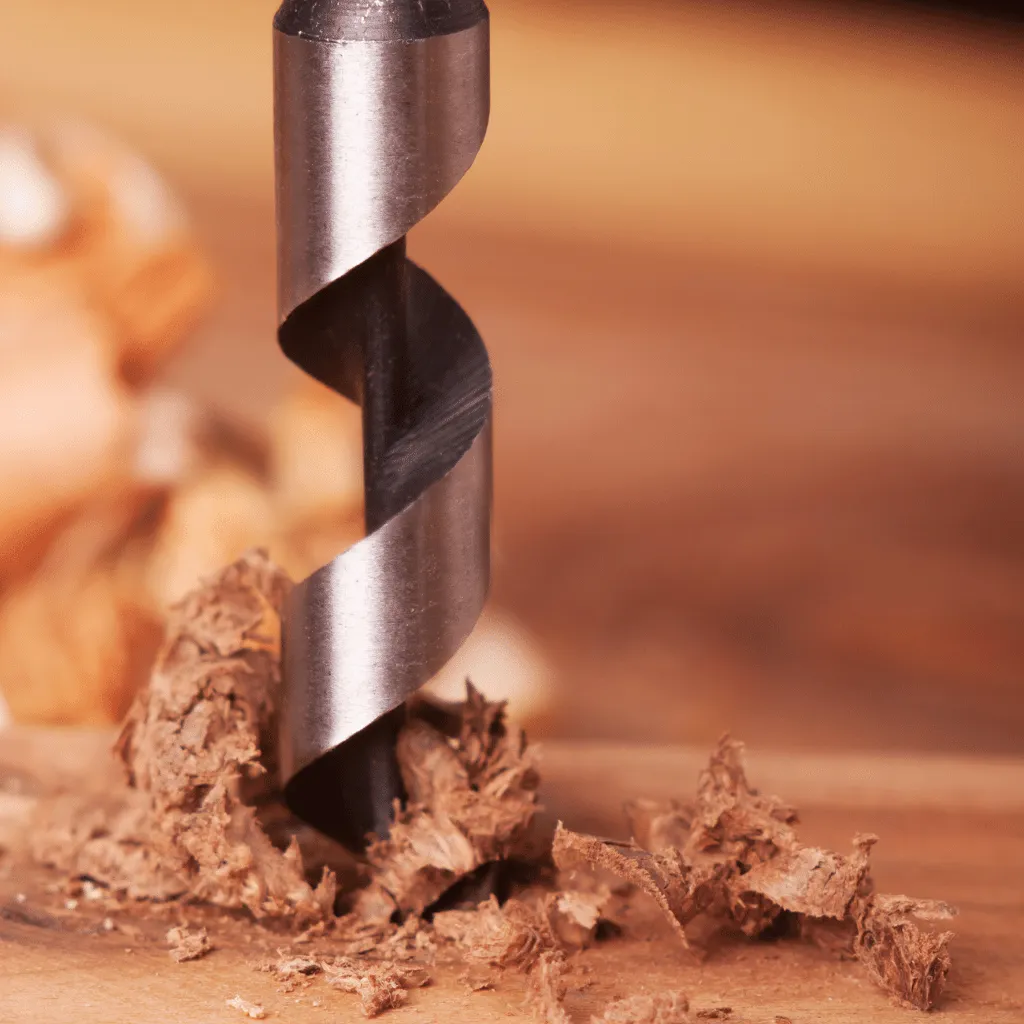
Who Uses Them?
Woodworkers of all skill levels can benefit from using auger bits. Whether you’re a professional carpenter, a hobbyist, or a DIY enthusiast, these bits can help you achieve accurate and clean holes in your woodworking projects.
Pros and Cons
Pros
- Auger bits offer excellent precision and control, thanks to their spiral design.
- They are durable and can withstand heavy use.
- They are also available in various sizes to accommodate different hole diameters.
Cons
- Auger bits can be more expensive compared to standard drill bits.
- Their design makes them more suitable for drilling deep holes rather than shallow ones.
- Additionally, the spiral flute can cause tear-out on the exit side of the hole in some cases.
#23. Hand Saw
Hand saws are manual cutting tools with a handle and a blade. The blade is usually made of steel and features sharp teeth along one edge. These teeth are designed to efficiently cut through wood fibers when pushed or pulled.
Uses in Woodworking
Hand saws are versatile tools that find numerous applications in woodworking. They are commonly used for crosscutting, ripping, and making precise cuts, such as dovetails or tenons.
Whether you’re building furniture, crafting intricate designs, or working on home improvement projects, a hand saw is an essential tool in any woodworker’s arsenal.
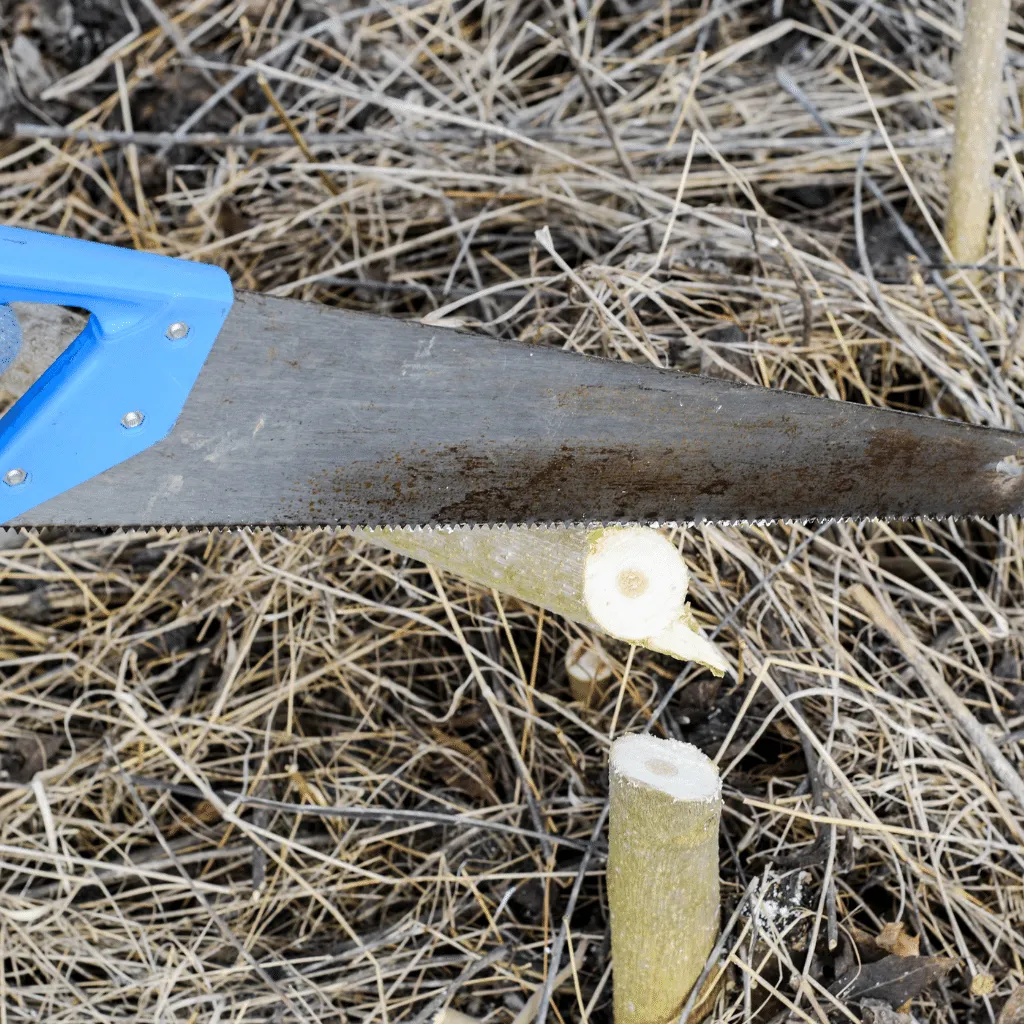
Who Mostly Uses Hand Saws?
Hand saws are beloved by both professional woodworkers and DIY enthusiasts. From experienced craftsmen to hobbyists, hand saws are appreciated for their precision and control.
They are also a popular choice among traditional woodworkers who value the connection to their craft and enjoy the hands-on experience.
Pros and Cons of Hand Saws
Pros
- They are portable, require no power source, and are relatively affordable compared to power tools.
- Hand saws also provide excellent control, allowing woodworkers to make accurate cuts with ease.
Cons
- On the flip side, hand saws require physical effort and can be slower than power saws.
- They may not be suitable for certain types of cuts or materials.
Read More: What is DIY Home Decor? (How to Do It?)
#24. Japanese Pull Saw
Japanese pull saws, also known as Nokogiri, are hand saws that cut on the pull stroke instead of the push stroke like most Western saws.
This design allows for greater control, precision, and efficiency. The blades of these saws are thin, sharp, and replaceable, making them ideal for intricate woodworking tasks.
Uses in Woodworking
Japanese pull saws are incredibly versatile and excel in various woodworking applications. They are particularly well-suited for tasks such as joinery, cutting dovetails, trimming, and precision cuts.

The pull stroke action reduces the risk of tear-out, resulting in cleaner cuts and minimizing the need for sanding or planing.
Who Uses Them?
Woodworkers of all skill levels can benefit from using Japanese pull saws. From professional carpenters and furniture makers to DIY enthusiasts and hobbyists, these saws are beloved for their ease of use and exceptional cutting ability.
Whether you’re a seasoned woodworker or just starting, a Japanese pull saw can be a valuable addition to your toolkit.
Pros and Cons
Pros
- Some advantages include their superior cutting precision, the ability to make ultra-thin kerf cuts, and their suitability for both crosscuts and rip cuts.
Cons
- On the downside, the thin blades may be more prone to bending or breaking if not used correctly, and they require more frequent replacement compared to traditional Western saws.
#25. Spindle Gouge
Spindle gouges are a type of woodturning tool that resembles a chisel with a curved cutting edge. They are specifically designed for shaping and detailing cylindrical objects, such as spindles, chair legs, and table legs.
The curved cutting edge allows woodworkers to create intricate designs and smooth curves with precision.
Uses in Woodworking
The primary use of spindle gouges is to turn wood on a lathe. Woodturners rely on these versatile tools to shape and refine their projects.
Whether it’s creating decorative patterns, shaping beads, coves, or V-grooves, the spindle gouge is an indispensable tool in a woodworker’s arsenal.

Who Mostly Uses Them?
Spindle gouges are commonly used by woodturners, artisans, and hobbyists who specialize in woodturning.
These skilled craftsmen and craftswomen appreciate the spindle gouge’s ability to create intricate details and smooth finishes on their turned projects.
Pros and Cons
Pros
- Allows for precise shaping and detailing of cylindrical objects.
- Enables the creation of intricate designs and smooth curves.
- Provides versatility in woodturning projects.
Cons
- Requires practice and skill to master.
- Can be challenging to control for beginners.
- May require regular sharpening to maintain optimal performance.
#26. Carving Knife
Carving knives are essential tools in the world of woodworking. They are specifically designed to shape and sculpt wood with precision and finesse.
These knives feature a sharp, narrow blade that tapers to a fine point, allowing woodworkers to make intricate cuts and create detailed designs.
Uses in Woodworking
Carving knives are versatile tools that can be used for a variety of woodworking tasks. They excel at carving intricate patterns, sculpting delicate details, and shaping wood into desired forms.
Whether you’re creating intricate furniture embellishments or crafting beautiful figurines, a carving knife is the go-to tool for achieving precision and artistic expression.
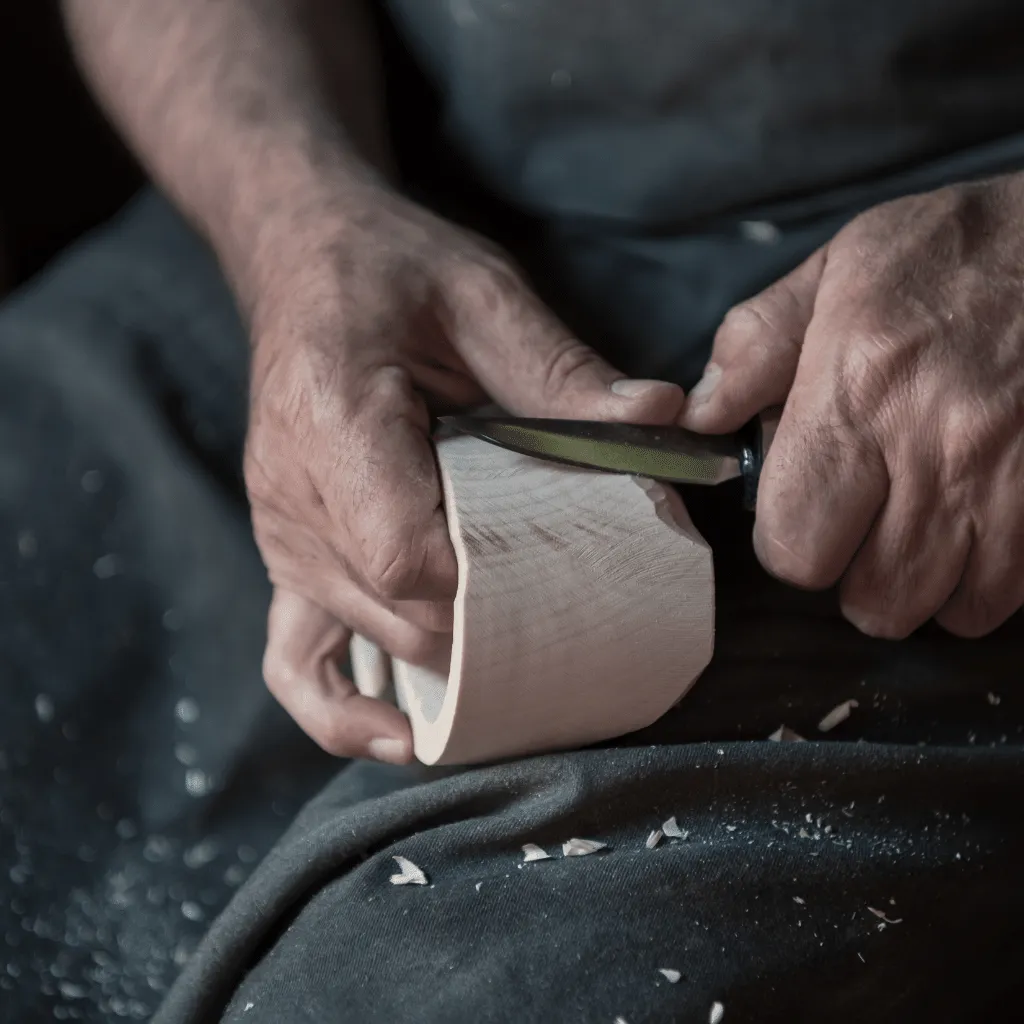
Who Mostly Uses Them?
Carving knives are primarily used by skilled woodworkers, artisans, and hobbyists who specialize in fine woodworking.
These individuals have honed their craft and possess the expertise required to bring out the natural beauty of wood through intricate carvings.
Pros and Cons of Carving Knives
Pros
- Carving knives offer exceptional control and maneuverability, allowing woodworkers to create intricate and detailed designs.
- They are also lightweight and portable, making them easy to use for extended periods without causing fatigue.
Cons
- Carving knives require skill and practice to master.
- They can be dangerous if not used properly, as their sharp blades can cause injury.
- Additionally, carving knives are not suitable for heavy-duty tasks or rough shaping, as their delicate blades are more prone to damage.
#27. Fret Saw
Fret saws are the unsung heroes of woodworking, combining precision and versatility in one compact tool.
These handheld saws feature a narrow, fine-toothed blade that is tensioned between a sturdy frame, allowing artisans to make intricate and delicate cuts with ease.
Uses in Woodworking
Fret saws are the go-to tool for creating intricate curves, patterns, and detailed cuts in wood. They excel in cutting delicate materials like thin plywood, veneers, and even metals.
Woodworkers often rely on fret saws for crafting intricate marquetry, delicate scrollwork, and precise fretwork designs.

Who Mostly Uses Them?
Fret saws are a favorite among woodworkers, especially those who specialize in fine woodworking, marquetry, and luthiery.
They are also popular among hobbyists and artisans who enjoy creating intricate designs and decorative elements in their projects.
Pros and Cons
Pros
- On the positive side, they offer unparalleled precision, allowing woodworkers to make intricate cuts with ease.
- Their narrow blades provide excellent control and maneuverability, making them ideal for detailed work.
- Fret saws are also relatively affordable and easy to use, making them accessible to woodworkers of all skill levels.
Cons
- On the downside, fret saws have limitations when it comes to cutting thicker materials or making long straight cuts.
- They require a steady hand and patience to achieve the desired results.
- Additionally, changing blades can be a bit time-consuming, but the versatility they offer outweighs this minor inconvenience.
#28. Bench Hook
Have you ever wondered what those handy little tools are that woodworkers always seem to have on their workbenches? Well, wonder no more! Allow me to introduce you to the humble yet essential bench hook.
Uses in Woodworking
Bench hooks are simple devices designed to hold wood securely in place while it is being worked on. They consist of a wooden base with a perpendicular stop at one end and often have a notch or groove to accommodate different types of saws.
These nifty tools help woodworkers achieve accurate cuts and prevent the wood from moving or slipping during the process.
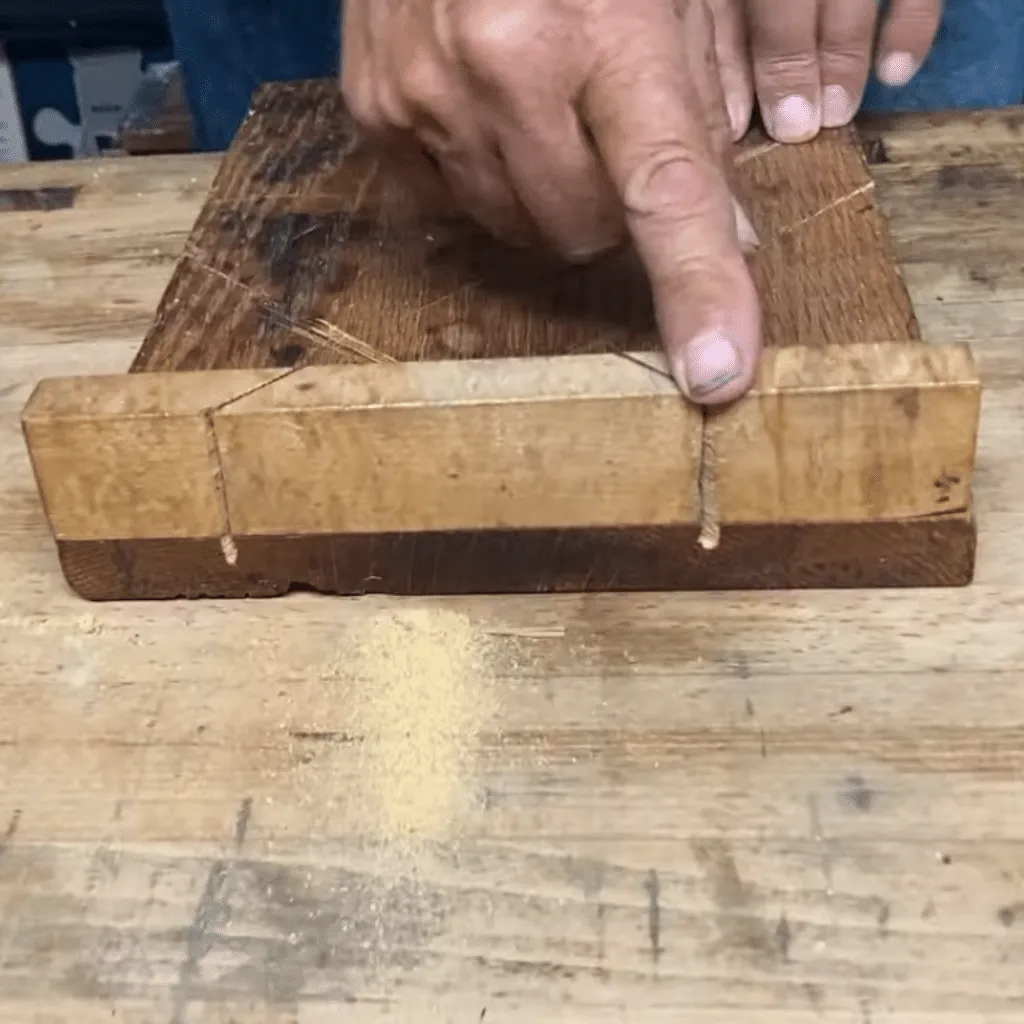
Who Uses Bench Hooks?
Woodworkers of all skill levels can benefit from using bench hooks. From hobbyists to professional craftsmen, anyone working with wood can appreciate the convenience and stability that these tools provide.
Whether you’re a DIY enthusiast or a seasoned pro, a bench hook will quickly become your go-to companion in the workshop.
Pros and Cons
Pros
- Easy to make or purchase: Bench hooks can be easily crafted from scrap wood or found in most woodworking supply stores.
- Cost-effective: They are an affordable addition to your woodworking arsenal.
- Versatile: Bench hooks can be used with various tools, such as saws, chisels, and planes.
- Enhanced safety: They provide stability and prevent accidents by keeping the wood firmly in place.
Cons
- Limited size capacity: Bench hooks are best suited for smaller projects and may not accommodate larger pieces of wood.
- Not suitable for all cuts: While bench hooks excel at crosscuts and miter cuts, they may not be ideal for certain types of woodworking techniques.
#29. Card Scraper
Card scrapers, also known as cabinet scrapers or hand scrapers, are versatile hand tools used in woodworking. They are thin, flat pieces of hardened steel with a slightly curved edge, resembling a credit card.
These humble tools may not look like much, but they possess the power to transform rough surfaces into silky-smooth perfection.
Uses in Woodworking
Card scrapers excel at removing fine shavings of wood, leveling surfaces, and refining edges. They are particularly effective in smoothing out difficult grain patterns, removing glue residue, or eliminating tear-out.
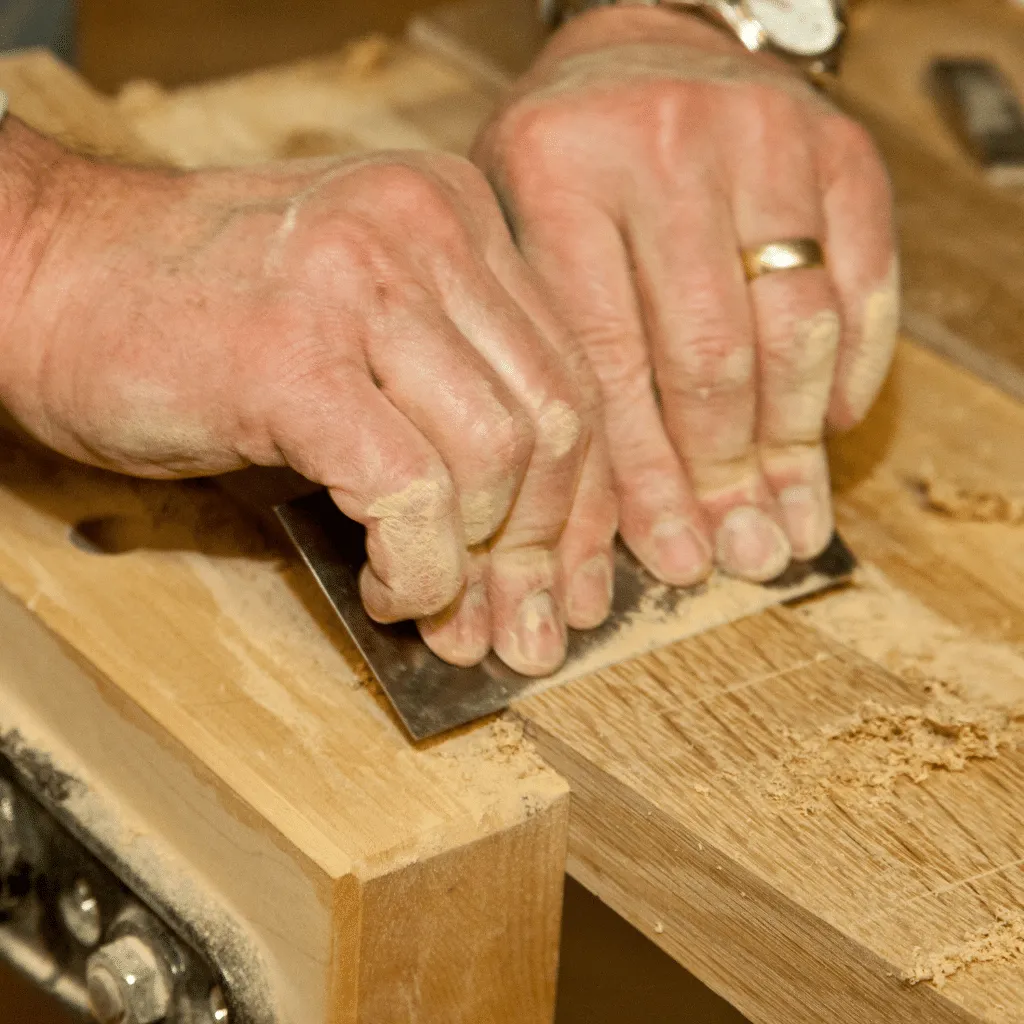
Whether you’re working on furniture, cabinetry, or any woodworking project, card scrapers are an invaluable addition to your toolkit.
Who Uses Them?
Woodworkers of all levels, from beginners to seasoned professionals, rely on card scrapers to achieve impeccable finishes.
Whether you’re a hobbyist, a furniture maker, or a restoration expert, these tools are a must-have for anyone passionate about woodworking.
Pros and Cons
Pros
- Card scrapers are cost-effective, easy to use, and require minimal maintenance.
- They provide exceptional control and precision, allowing you to achieve a glass-like finish.
- They also eliminate the need for sandpaper, saving time and money.
Cons
- Learning to use card scrapers effectively requires practice and technique.
- They can be physically demanding, as they rely on hand pressure rather than powered mechanisms.
- Additionally, they are less effective on large, flat surfaces compared to power tools.
#30. Dowel Jig
A dowel jig is a tool designed to help woodworkers create perfectly aligned holes for dowels. Dowels are cylindrical wooden rods that are used to reinforce joints or connect two pieces of wood.
Dowel jigs come in various shapes and sizes, but they all serve the same purpose: to ensure accurate hole placement for dowels.
Uses in Woodworking
Dowel jigs are incredibly versatile and can be used in a wide range of woodworking projects. They are particularly useful for creating strong and durable joints, such as edge-to-edge, edge-to-face, or miter joints.
Whether you’re building furniture, cabinets, or even picture frames, dowel jigs can help you achieve professional-quality results.

Who Benefits from Using Dowel Jigs?
Woodworkers of all skill levels can benefit from using dowel jigs. Beginners will appreciate the simplicity and ease of use, while experienced craftsmen will appreciate the precision and time-saving benefits.
Whether you’re a DIY enthusiast or a professional woodworker, a dowel jig is a valuable addition to your toolbox.
Pros and Cons
Pros
- Accuracy: Dowel jigs ensure precise hole placement, resulting in strong and seamless joints.
- Time-saving: With a dowel jig, you can quickly and efficiently create multiple dowel holes.
- Versatility: Dowel jigs can be used for various woodworking projects, making them a versatile tool.
Cons
- Cost: Quality dowel jigs can be a bit pricey, especially for hobbyists on a tight budget.
- Learning curve: While dowel jigs are relatively easy to use, there is still a learning curve involved in mastering their full potential.
- Limitations: Dowel jigs are best suited for certain types of joints and may not be suitable for all woodworking applications.
#31. Caulking Mallet
A caulking mallet, also known as a caulking hammer, is a specialized tool used in woodworking to drive wooden caulking into the seams of planks or joints.
It consists of a wooden or rubber head attached to a handle, providing a comfortable grip and controlled striking force.
Uses in Woodworking
Caulking mallets are primarily used in traditional boat building and ship repair, where they play a crucial role in sealing gaps between wooden planks to prevent leaks.
However, their usefulness extends beyond maritime applications. They are also handy for furniture making, cabinetry, and other woodworking projects that involve joining wooden pieces together.

Who Uses Caulking Mallets?
While caulking mallets are commonly used by professional boat builders and shipwrights, they are also a valuable tool for woodworking enthusiasts, DIYers, and craftsmen who work with wood.
Their versatility and ease of use make them suitable for both experienced professionals and beginners in the woodworking field.
Pros and Cons
Pros
- Effective for driving caulking into tight seams
- Provides controlled striking force
- Comfortable grip for extended use
- Helps achieve a watertight seal
Cons
- May leave marks or dents if not used carefully
- Requires some skill and practice to use it effectively
- Not suitable for all woodworking projects
#32. Wooden Jointer Plane
Wooden jointer planes are essential tools in the world of woodworking. These hand planes are specifically designed to flatten and straighten the edges of boards, creating smooth and even surfaces.
They are typically made with a wooden body and a long iron blade, allowing for precise control and accuracy.
Uses in Woodworking
The primary use of a wooden jointer plane is to ensure that boards have flat and straight edges, which is crucial for creating seamless joints and achieving precise measurements.
These planes excel at removing imperfections, such as twists, bows, and cupping, from the edges of boards, resulting in a more professional and polished finish.
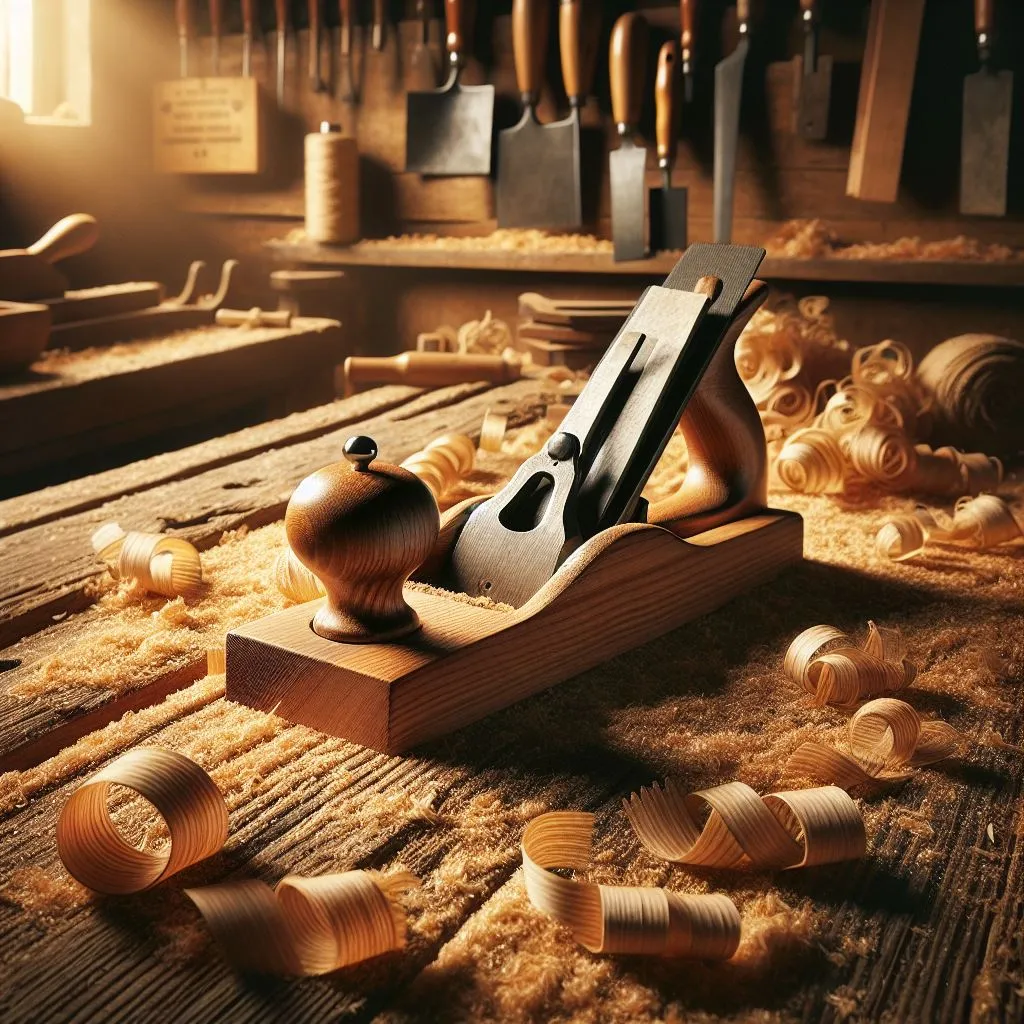
Who Mostly Uses Them?
Wooden jointer planes are commonly used by professional woodworkers, carpenters, and furniture makers who work with large boards and require precise edge preparation.
However, they can also be a valuable tool for hobbyists and DIY enthusiasts who are passionate about woodworking and want to achieve professional-level results.
Pros and Cons
Pros
- One of the significant advantages of wooden jointer planes is their ability to remove material quickly and efficiently, making them ideal for larger projects.
- They also offer excellent control and precision, allowing for fine adjustments to be made.
- Additionally, the wooden body of these planes tends to be lighter, making them more comfortable to use for extended periods.
Cons
- However, wooden jointer planes require regular maintenance to keep the blade sharp and the body in good condition.
- They may also be more expensive compared to their metal counterparts.
- Additionally, the wooden body can be susceptible to changes in humidity, which may affect the plane’s performance.
#33. Rabbet Plane
A rabbet plane is a specialized hand plane that is designed to cut rabbets, which are recessed grooves or channels typically found in woodworking joints. It features a narrow, protruding blade that allows for precise and controlled cutting.
Uses in Woodworking
Rabbet planes are primarily used for creating clean and accurate rabbet joints, which are essential in cabinetmaking, furniture construction, and other woodworking projects. They are particularly handy for creating strong and seamless connections between pieces of wood.
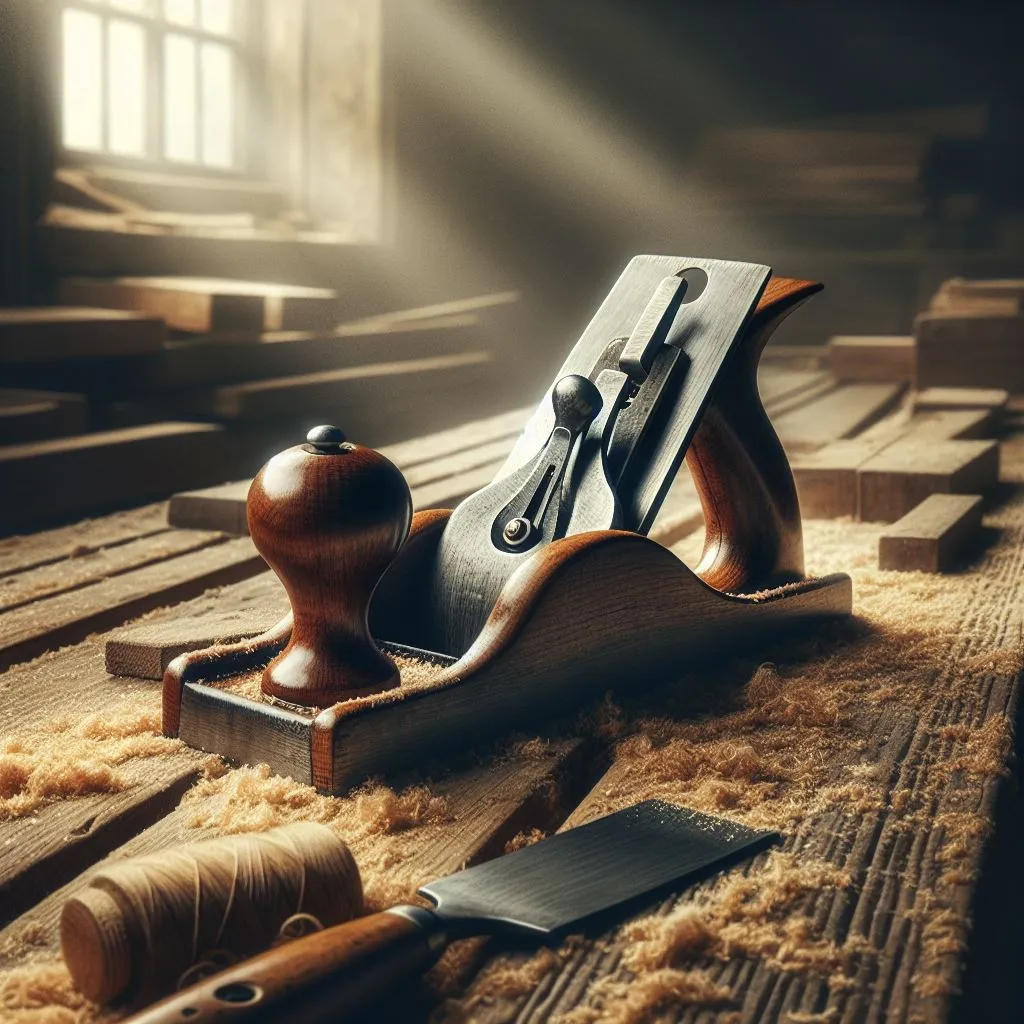
Who Mostly Uses Them?
Woodworkers of all skill levels can benefit from the versatility of rabbet planes. From seasoned professionals to enthusiastic hobbyists, anyone looking to achieve precise and professional-looking joints will find this tool indispensable.
Pros and Cons
Pros
- On the positive side, they offer exceptional control and precision, allowing woodworkers to achieve tight-fitting joints.
- They also allow for easy adjustment of the cutting depth, making them versatile for various woodworking projects.
Cons
- However, rabbet planes can be a bit challenging to master, especially for beginners.
- Achieving consistent and even cuts requires practice and finesse.
- Additionally, they are not suitable for all woodworking tasks, as their narrow blades limit their functionality in certain situations.
#34. Router Plane
Router planes are hand tools used in woodworking for various tasks such as smoothing, leveling, and creating grooves or recesses in wood.
They consist of a flat base with a blade that protrudes through the bottom, allowing precise control over the depth of the cut.
Uses in Woodworking
Router planes are incredibly versatile and find applications in different woodworking projects. They are commonly used for:
- Flattening and truing the bottoms of grooves and dadoes
- Creating precise recesses for inlays and hinges
- Smoothing and leveling surfaces, especially in joinery work
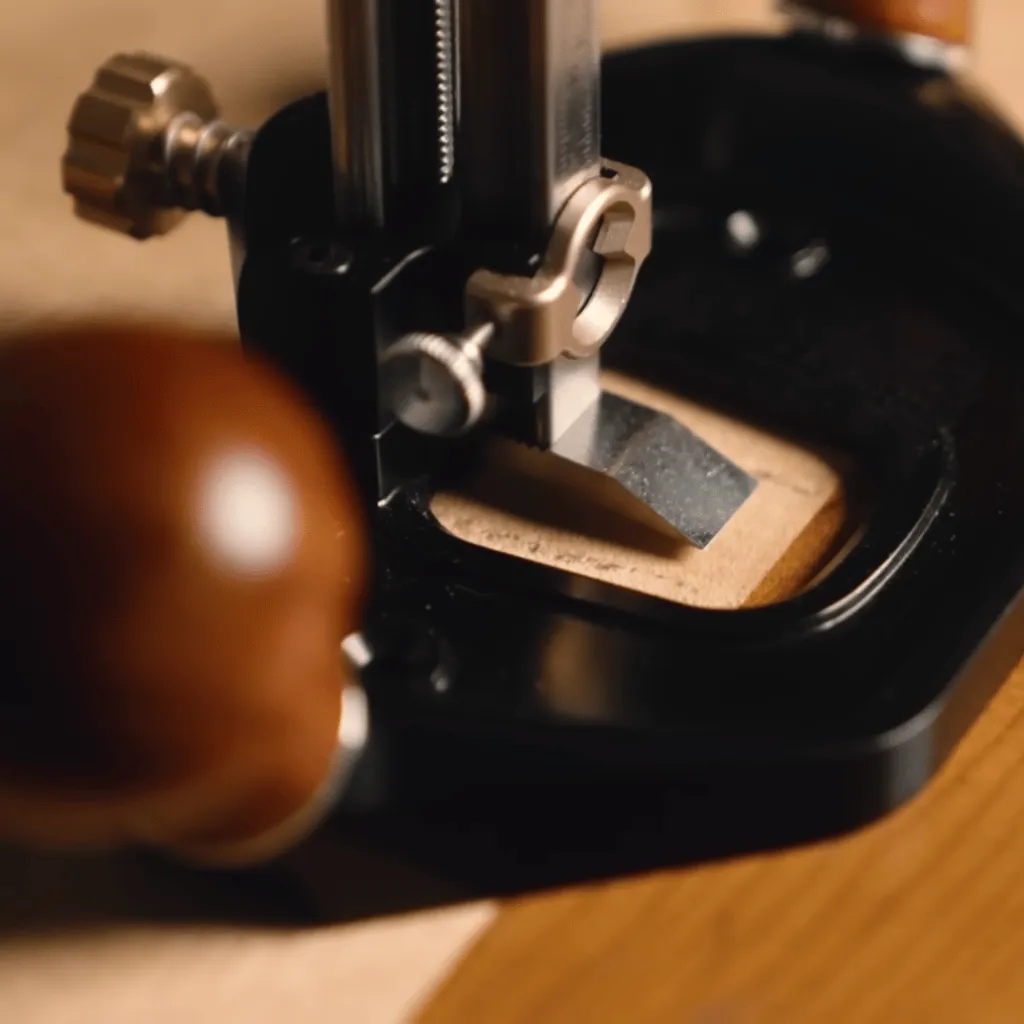
Who Mostly Uses Them?
Router planes are favored by both professional woodworkers and hobbyists alike. They are particularly useful for fine woodworking tasks that require precision and control.
Craftsmen who specialize in traditional joinery, cabinetry, and furniture making often rely on router planes to achieve impeccable results.
Pros and Cons
Pros
- Router planes offer exceptional control and precision, allowing woodworkers to achieve clean and accurate cuts.
- They are also relatively easy to use and maintain.
Cons
- Router planes require manual effort, making them slower than power tools for large-scale projects.
- Additionally, they may not be suitable for certain tasks that require rapid material removal.
#35. Adjustable Mouth Block Plane
Adjustable mouth block planes are handheld woodworking tools that feature a movable throat or mouth. This unique feature allows woodworkers to control the size of the opening, enabling them to tackle a wide range of tasks with precision.
Whether you’re smoothing rough surfaces, chamfering edges, or fitting joints, these versatile planes have got you covered.
Uses in Woodworking
These planes excel in various woodworking applications. They are particularly useful for fine-tuning and adjusting the thickness of wooden pieces.
Need to shave off a small amount of material? The adjustable mouth block plane is your go-to tool. Additionally, they are great for end-grain work, creating clean, smooth cuts, and even leveling surfaces.

Who Benefits Most from Adjustable Mouth Block Planes?
Woodworkers of all skill levels can benefit from the versatility of adjustable mouth block planes. From seasoned professionals to DIY enthusiasts, these planes are invaluable for anyone looking to achieve precise and professional results.
Whether you’re crafting furniture, building cabinets, or working on intricate woodworking projects, these planes will quickly become your new best friend.
Pros and Cons
Pros
- On the positive side, they offer exceptional control, allowing for precise material removal.
- They are compact and easy to handle, making them ideal for smaller projects.
Cons
- However, they may require some practice to master, and their smaller size may limit their effectiveness on larger pieces of wood.
#36. Flush Trim Saw
Flush trim saws are a must-have tool in any woodworker’s arsenal. These handy devices are designed to precisely trim and level the edges of one material to match the contour of another.
They allow for clean, professional-looking finishes and are a go-to tool for achieving seamless joints and edges.
Uses in Woodworking
Flush trim saws excel in a variety of woodworking tasks. Whether you’re working on cabinetry, furniture, or even intricate woodcraft projects, these saws are indispensable.
They effortlessly trim excess material, such as laminate, veneer, or edge banding, ensuring a flawless fit and finish.
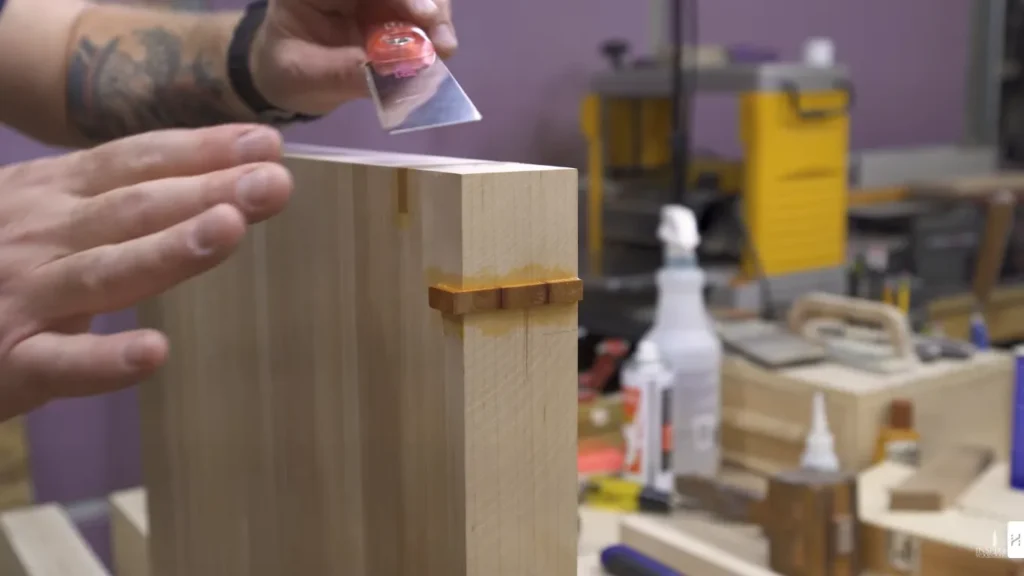
Who Mostly Uses Them?
Flush trim saws are beloved by both professional woodworkers and DIY enthusiasts alike. From skilled craftsmen in high-end furniture workshops to hobbyists working on weekend projects, these saws are a staple in the woodworking community.
Pros and Cons
Pros
- These saws are lightweight and easy to handle, offering precise control and accuracy.
- They save time by swiftly trimming excess material without damaging the underlying surface.
- Plus, they are versatile and compatible with various materials.
Cons
- While flush trim saws are incredibly useful, they do require some skill to operate effectively.
- It’s important to practice proper technique to avoid any accidental damage to the workpiece.
#37. Coping Plane
Coping planes are specialized hand tools used in woodworking to shape and smooth the edges of various materials, particularly in intricate and curved designs.
They consist of a narrow blade with a curved cutting edge and a handle, allowing for precise control and maneuverability.
Uses in Woodworking
Coping planes excel at creating precise and clean joints, especially in situations where two pieces of wood meet at an angle or have intricate shapes.
They are commonly used for tasks such as fitting moldings, trimming dowels, or shaping intricate details on furniture and cabinetry.
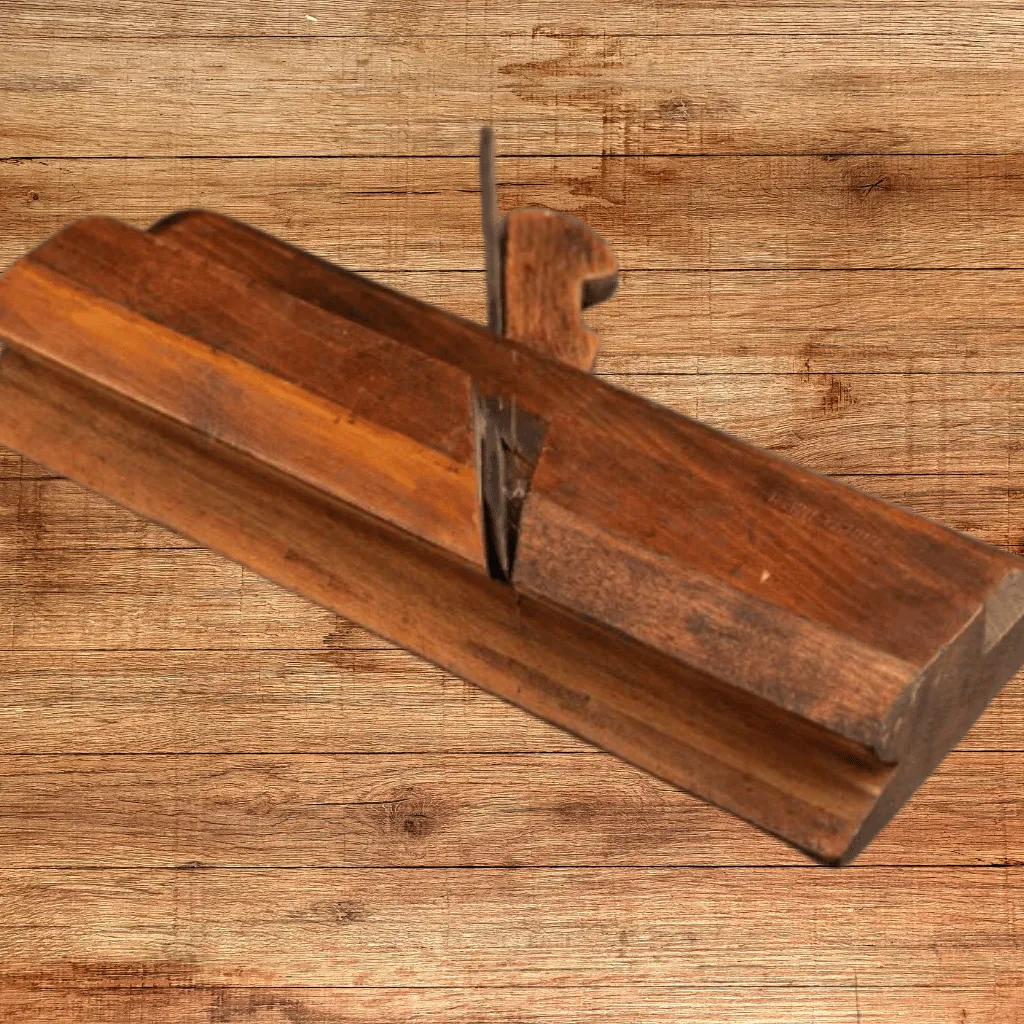
Who Mostly Uses Them?
Woodworkers, carpenters, and craftsmen who specialize in fine woodworking often rely on coping planes to achieve exceptional precision and quality in their projects.
These skilled artisans understand the value of these versatile tools and appreciate the level of control they provide.
Pros and Cons
Pros
- Excellent for shaping curved and intricate designs
- Precise control over material removal
- Create clean and seamless joints
- Enhance the overall aesthetics of woodworking projects
Cons
- Requires practice and skill to master
- May be limited in use for specific woodworking tasks
- Can be more time-consuming compared to power tools
- The higher initial cost for quality coping planes
#38. Edge Plane
Edge planes are specialized hand tools used in woodworking to smooth and shape the edges of wooden boards. They are designed to create clean, straight, and precise edges, making them a must-have for any serious woodworker.
Uses in Woodworking
The primary purpose of an edge plane is to refine the edges of wooden boards, removing any imperfections, roughness, or irregularities. They are commonly used in tasks such as chamfering, beveling, and jointing edges for a seamless fit.
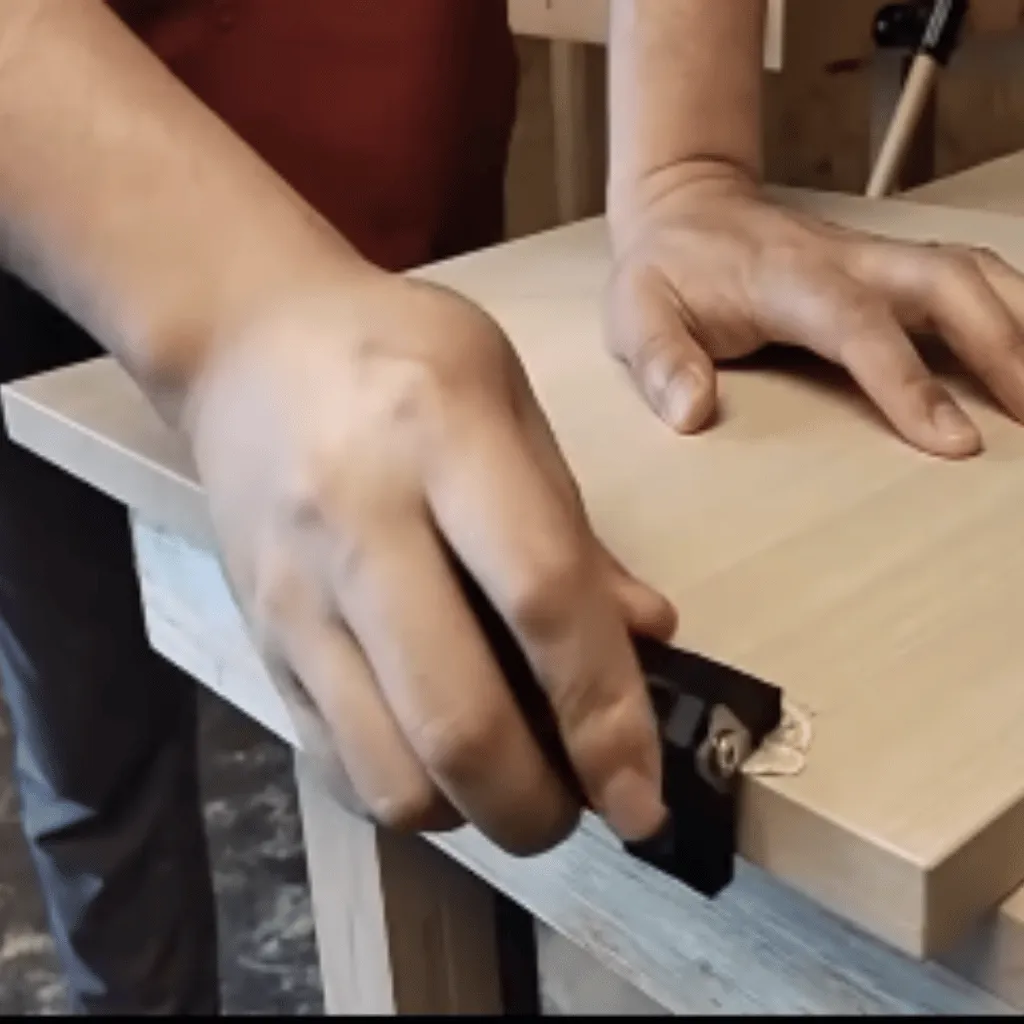
Who Uses Edge Planes?
Edge planes are favored by both professional woodworkers and hobbyists alike. Craftsmen who specialize in furniture making, cabinetry, and carpentry find edge planes indispensable for achieving precise and professional results.
Pros and Cons of Edge Planes
Pros
- Accuracy: Edge planes allow for precise control, ensuring clean and straight edges.
- Efficiency: They can quickly remove material, saving time and effort.
- Versatility: Edge planes can be used on various types of wood and for different edge profiles.
Cons
- Requires Skill: Using an edge plane effectively requires practice and technique.
- Limited to Edges: Edge planes are specialized for edge work and may not be suitable for other woodworking tasks.
- Cost: Quality edge planes can be expensive, especially those made by reputable manufacturers.
#39. Router(Power tool)
Routers are power tools that have a spinning blade or bit attached to them. They are used to hollow out an area or create intricate designs on wood. Routers can be handheld or mounted on a table, providing flexibility and precision in woodworking projects.
Uses in Woodworking
Routers have a wide range of uses in woodworking. They can be used for shaping edges, creating decorative profiles, cutting dadoes and grooves, making mortises, and even carving intricate designs.
Whether you are a professional woodworker or a hobbyist, routers can greatly enhance your craftsmanship and allow you to create unique and beautiful pieces.
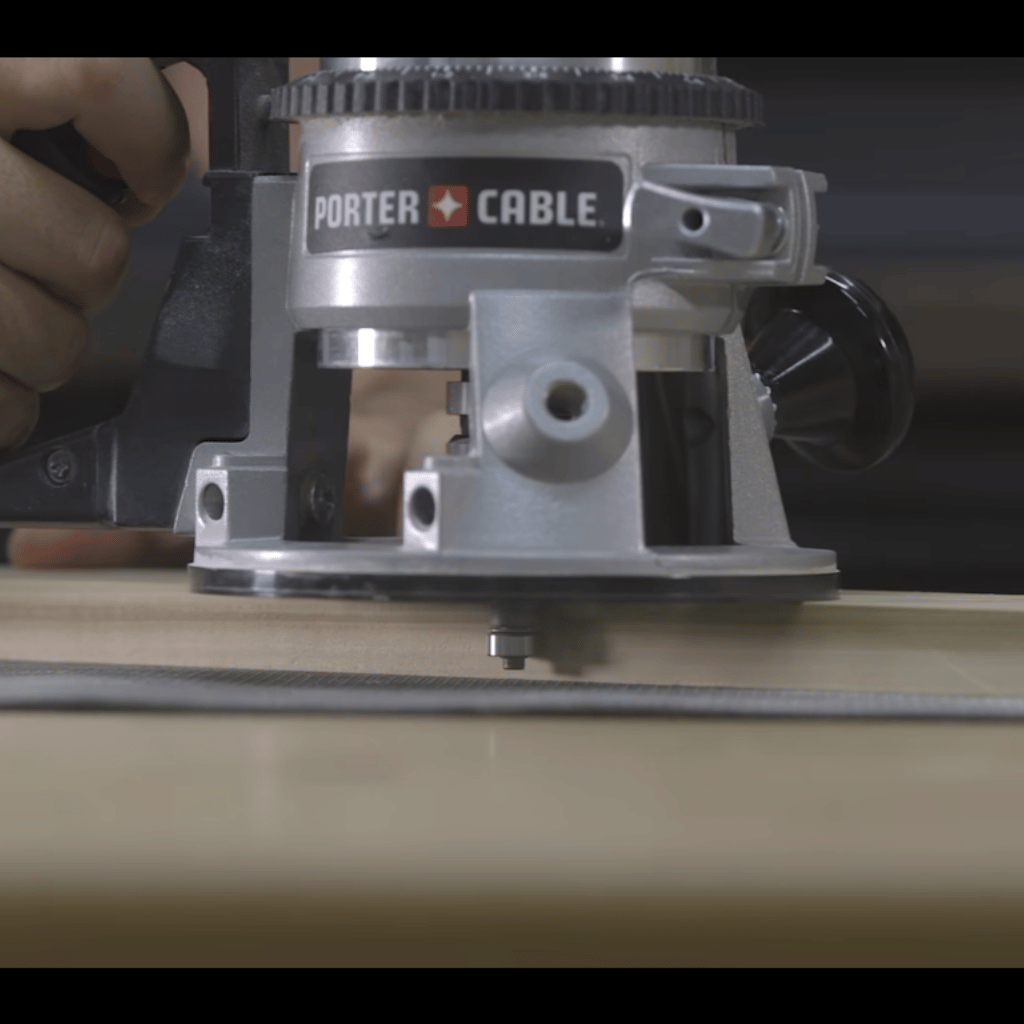
Who Mostly Uses Routers?
Routers are used by a variety of individuals in the woodworking industry. Professional woodworkers, carpenters, and cabinet makers rely on routers for their precision and efficiency.
Additionally, hobbyists and DIY enthusiasts also utilize routers to add a professional touch to their woodworking projects.
Pros and Cons
Pros
- Some advantages of using routers include their versatility, ability to create intricate designs, and precise cutting capabilities.
Cons
- On the other hand, routers can be intimidating for beginners and require proper safety precautions.
- They can also be noisy and produce a lot of dust.
- However, with the right skills and precautions, the benefits of using routers far outweigh the drawbacks.
#40. Biscuit Joiner (Power tool)
A biscuit joiner, also known as a plate joiner, is a specialized power tool that is used to create strong and precise joints in woodworking projects.
It works by cutting small, oval-shaped slots (or “biscuit slots”) into the edges of two pieces of wood, which are then joined together with the help of an adhesive.
Uses in Woodworking
Biscuit joiners are incredibly versatile tools that can be used for a wide range of woodworking projects. They are commonly used to join pieces of wood together when making cabinets, furniture, and other wooden structures.
Biscuit joinery is particularly useful for aligning and reinforcing joints, creating seamless and sturdy connections between boards.

Who Uses Biscuit Joiners?
Biscuit joiners are popular among both professional woodworkers and DIY enthusiasts. They are especially favored by cabinetmakers, furniture makers, and carpenters who need to create strong, invisible joints in their projects.
However, even hobbyists and beginners can benefit from using a biscuit joiner to improve the quality and durability of their woodworking projects.
Pros and Cons of Biscuit Joiners
Pros
- Biscuit joinery is quick and easy, providing a strong and reliable joint.
- The biscuits help with alignment and prevent wood movement, resulting in a more stable finished product.
- Biscuit joiners are also relatively affordable and can be used on a variety of wood types.
Cons
- Biscuit joiners have limitations when it comes to joining very thick or narrow pieces of wood.
- The size of the biscuit can also limit the strength of the joint, making it less suitable for heavy-duty applications.
- Additionally, the tool requires some skill and practice to achieve precise and accurate cuts.
#41. Wood Burnishing Tool
A wood burnishing tool is a handheld device used to create a polished finish on wood surfaces. It works by applying pressure and friction to the wood, resulting in a smooth and glossy appearance. This tool is often used to enhance the natural grain of the wood and give it a professional look.
Uses in Woodworking
Wood burnishing tools have a wide range of uses in woodworking. They can be used to create decorative finishes, smooth out rough edges, and even repair minor imperfections in the wood.
Whether you’re working on furniture, cabinets, or smaller projects like jewelry boxes, a wood-burnishing tool can help elevate the overall aesthetics of your work.
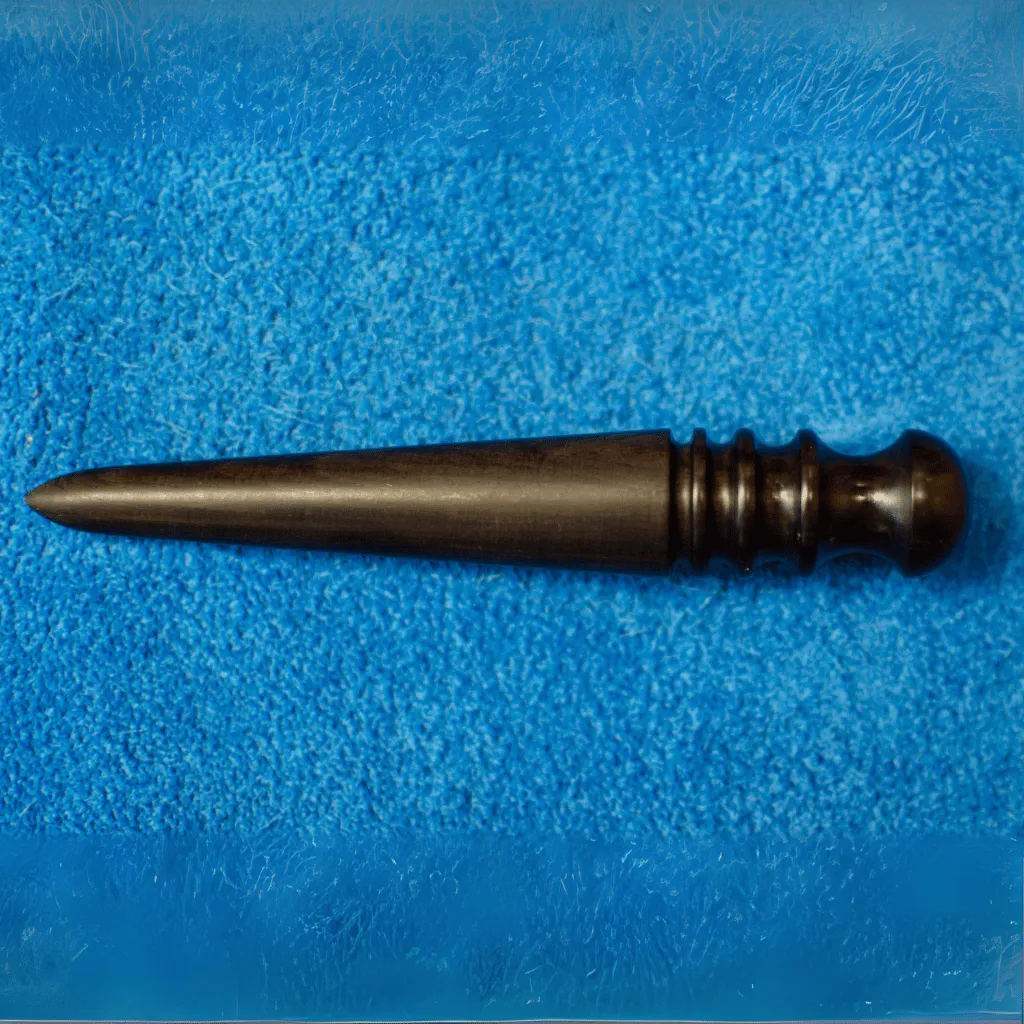
Who Uses Wood Burnishing Tools?
Wood burnishing tools are popular among both professional woodworkers and DIY enthusiasts. Professionals often use these tools to add a final touch to their high-end furniture pieces, while hobbyists enjoy experimenting with different finishes and textures on their woodworking projects.
Pros and Cons of Wood Burnishing Tools
Pros
- On the plus side, they are relatively easy to use and can achieve stunning results.
- They also offer versatility, allowing you to create various finishes depending on the pressure and technique used.
Cons
- However, it’s important to note that wood burnishing tools require practice to master, and excessive pressure can lead to damage or burn marks on the wood surface.
#42. Bench Brush
When it comes to woodworking, having the right tools can make all the difference. One tool that often gets overlooked but is essential for any woodworker’s arsenal is the humble bench brush. This unassuming tool may not grab headlines, but its usefulness and versatility are unmatched.
Uses in Woodworking
The primary purpose of a bench brush is to keep your workspace clean and free of debris. Whether you’re sawing, sanding, or chiseling, wood chips and dust can quickly accumulate.
The soft bristles of a bench brush are perfect for sweeping away these unwanted particles, ensuring a clean and safe working area.
But that’s not all! A bench brush is also handy for applying finishes and removing excess sawdust from your projects. Its gentle bristles won’t scratch or damage delicate surfaces, making it an ideal tool for final touch-ups.
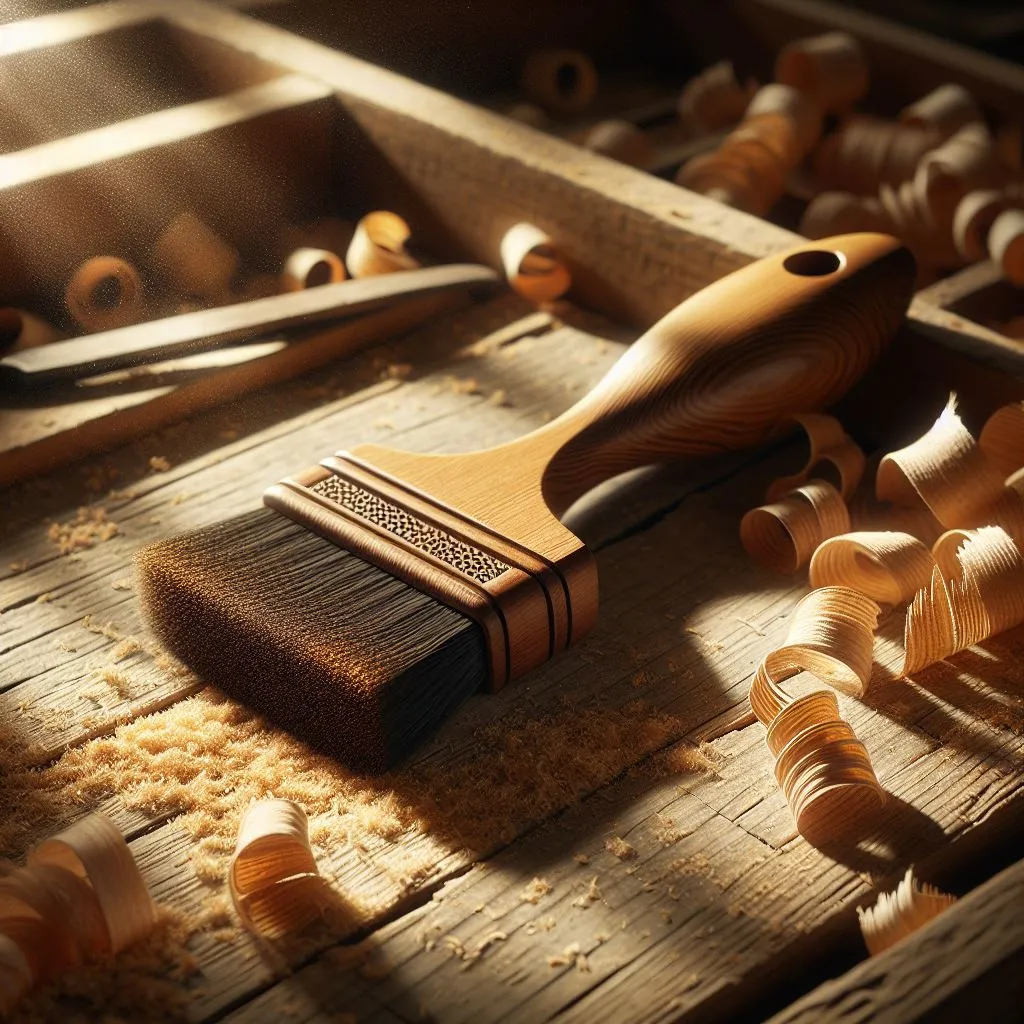
Who Uses It
Woodworkers of all levels, from hobbyists to professionals, rely on bench brushes. Whether you’re working in a small home workshop or a large commercial space, this versatile tool is a must-have for anyone who values cleanliness and precision in their craft.
Pros and Cons
Pros
- Lightweight and easy to handle, affordable, versatile, and gentle on surfaces, helps maintain a clean workspace.
Cons
- Limited reach in tight spaces, may not pick up larger debris as effectively as a broom or vacuum.
#43. Wood Ruler or Tape Measure
A wood ruler or tape measure is a measuring tool used to determine the length, width, and thickness of wood pieces.
It is typically made of wood or metal, with markings in inches, centimeters, or both. These tools come in various lengths, but the most common ones are 6 feet, 12 feet, and 25 feet.
Uses in Woodworking
Wood rulers and tape measures serve a multitude of purposes in woodworking. They are essential for measuring and marking wood pieces accurately, ensuring precise cuts and joints.
Whether you’re building furniture, cabinets, or even small wooden crafts, these tools help you achieve the desired dimensions and maintain consistency throughout your project.

Who Mostly Uses Them?
Wood rulers and tape measures are used by woodworkers of all levels, from hobbyists to professionals.
Whether you’re a DIY enthusiast working on small projects or a skilled carpenter crafting intricate designs, these tools are indispensable.
Wood rulers are particularly popular among traditional woodworkers, while tape measures are favored for their versatility and longer length.
Pros and Cons
Pros
- The advantages include their simplicity, accuracy, and ease of use.
- They are affordable, readily available, and can be used for a wide range of measuring tasks.
Cons
- However, they may not be suitable for measuring curved or irregular surfaces, and their longer lengths can be cumbersome for small-scale projects.
#44. Woodworker’s Vise
A woodworker’s vise is a clamping device designed specifically for woodworking tasks. It is typically mounted on a workbench and features two jaws that can be tightened or loosened using a screw mechanism.
These jaws provide a secure grip on the workpiece, allowing woodworkers to work on it with stability and precision.
Uses in Woodworking
The woodworker’s vise has a wide range of uses in woodworking. It is commonly used for tasks such as sawing, planing, chiseling, and sanding.
The vise holds the workpiece firmly in place, preventing it from slipping or moving during these processes. This stability is crucial for achieving accurate cuts, smooth surfaces, and precise joinery.

Who Uses Woodworker’s Vise?
Woodworker’s vises are used by both professionals and hobbyists alike. From furniture makers to cabinetmakers, from carpenters to woodturners, anyone working with wood can benefit from the use of a woodworker’s vise.
Whether you’re a seasoned craftsman or just starting, this versatile tool will undoubtedly find a place in your workshop.
Pros and Cons
Pros
- On the plus side, it provides a secure grip, ensuring stability and accuracy in woodworking tasks.
- It also allows for hands-free operation, freeing up the woodworker’s hands to focus on the task at hand.
Cons
- However, it’s important to note that a woodworker’s vise can take up valuable space on the workbench and may not be suitable for larger or irregularly shaped workpieces.
#45. Wire Brush
Wire brushes are versatile tools commonly used in woodworking projects. They consist of bristles made from sturdy metal wires, typically steel, that are attached to a handle.
The bristles are arranged in a brush-like formation, allowing for effective cleaning, polishing, and surface preparation.
Uses in Woodworking
Woodworkers rely on wire brushes for various tasks, including:
- Removing rust, paint, or other coatings from wood surfaces
- Creating distressed or weathered effects on wooden furniture or decorative pieces
- Preparing wooden surfaces for painting, staining, or finishing
- Cleaning and restoring old or antique wooden items

Who Mostly Uses Wire Brushes?
Wire brushes are a staple in the toolbox of both professional woodworkers and DIY enthusiasts. They are commonly used by carpenters, furniture makers, and artisans who work with wood.
Whether you’re a seasoned craftsman or a weekend warrior, a wire brush is a handy tool to have for your woodworking projects.
Pros and Cons
Pros
- Efficiently removes stubborn coatings and rust from wood surfaces
- Allows for creative distressing techniques
- Prepares wood for optimal paint or finish adhesion
- Helps restore the beauty of old wooden items
Cons
- May leave scratch marks if not used with caution
- Can be abrasive on delicate or softwood species
- Requires proper safety precautions, such as wearing protective gloves and eyewear
#46. Woodworking Clamp Set
A woodworking clamp set is a collection of clamps of various sizes and types that are specifically designed for woodworking projects.
These clamps hold pieces of wood together firmly, allowing glue to dry or for other woodworking processes to take place.
Uses in Woodworking
The uses of a woodworking clamp set are endless. From joining pieces of wood to holding them in place while cutting or sanding, these clamps are indispensable in woodworking.
They provide stability and ensure that your projects are held securely, allowing for precise and accurate work.
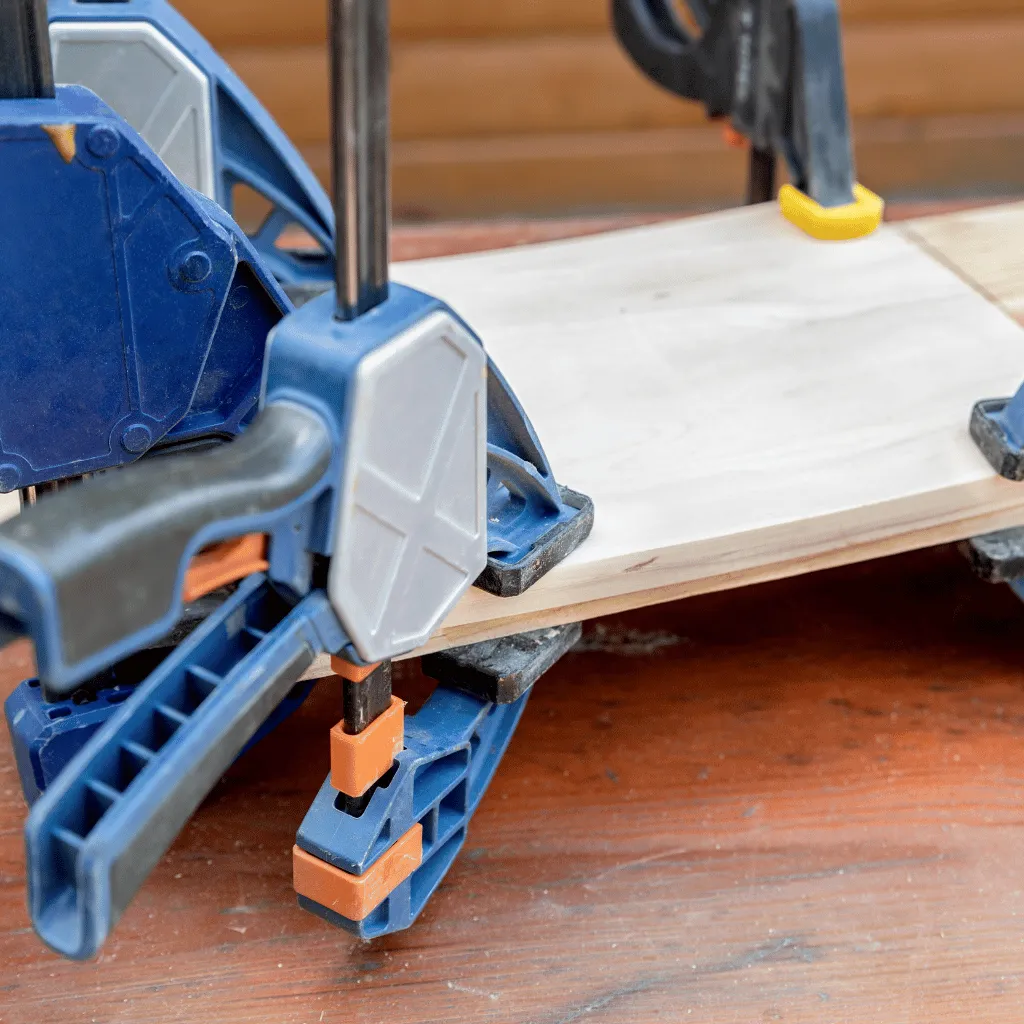
Who Uses Woodworking Clamp Sets?
Woodworking clamp sets are used by both professionals and hobbyists alike. Whether you are a seasoned woodworker working on complex projects or a beginner tackling simple DIY projects, a woodworking clamp set is an essential tool that will make your work easier and more efficient.
Pros and Cons of Woodworking Clamp Sets
Pros
- Provides stability and ensures precise and accurate woodworking
- Allows for hands-free operation, freeing up your hands to focus on other tasks
- Can be used for a wide range of woodworking projects
- Available in various sizes and types to suit different needs
Cons
- Can be expensive, especially if you opt for high-quality clamp sets
- Requires storage space due to their size and quantity
- It may leave clamp marks on the wood if not used properly
#47. Woodworking hammer
A woodworking hammer is a versatile hand tool designed specifically for woodworking tasks. With a solid head made of steel or other durable materials, it is attached to a handle, usually made of wood or fiberglass, providing a comfortable grip and allowing for controlled strikes.
Uses in Woodworking
The woodworking hammer is a multitasking tool that can be used for a variety of tasks. Its primary function is driving nails into wood, securing joints, and fastening pieces together.
Additionally, it is invaluable for removing nails, aligning workpieces, and even shaping wood when used in conjunction with chisels or carving tools.
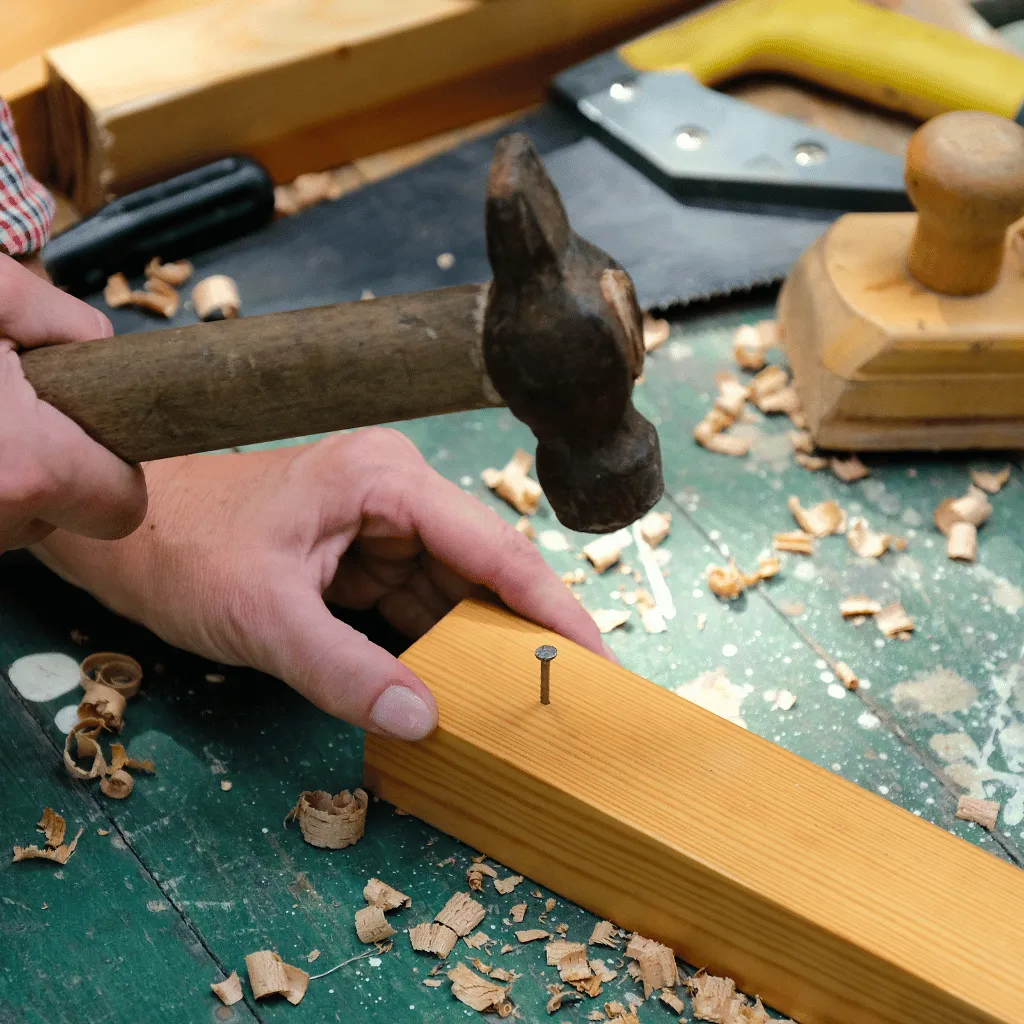
Who Uses the Woodworking Hammer?
Woodworking hammers are used by a diverse range of individuals, from professional carpenters and furniture makers to DIY enthusiasts and hobbyists.
Whether you’re building a bookshelf, crafting a wooden sculpture, or repairing a piece of furniture, the woodworking hammer is a must-have tool in any woodworking arsenal.
Pros and Cons
Pros
- On the plus side, it offers excellent control, allowing for precise strikes and adjustments.
- Its versatility and durability make it suitable for a wide range of woodworking tasks.
Cons
- However, it can be physically demanding to use for extended periods, and improper use may result in accidental damage to the wood or injury to the user.
Final Thoughts
Hand tools are an essential part of any woodworker’s toolkit. They offer precision, control, and a connection to the craft that power tools can’t replicate.
Whether you’re a beginner or an experienced woodworker, investing in high-quality hand tools will help you achieve professional results and enhance your woodworking experience.
FAQs
Some essential hand tools for woodworking include a chisel, hand plane, coping saw, marking gauge, and a mallet.
When choosing hand tools for woodworking, consider the quality of the materials, the ergonomics of the handle, and the overall durability of the tool. It’s also important to choose tools that are appropriate for the specific woodworking tasks you’ll be undertaking.
While power tools can certainly make certain woodworking tasks faster and more efficient, there is still a place for hand tools in woodworking. Hand tools allow for greater precision and control, and they can be used in situations where power tools may not be suitable.
Hand tools can be a great option for beginners in woodworking because they are generally more affordable and require less space than power tools. Additionally, using hand tools can help beginners develop a better understanding of woodworking techniques and principles.
To maintain and care for your hand tools, it’s important to keep them clean and dry after each use. Regularly inspect the tools for any signs of damage or wear, and sharpen them as needed. Proper storage, such as hanging them on a pegboard or storing them in a toolbox, can also help prolong their lifespan.






